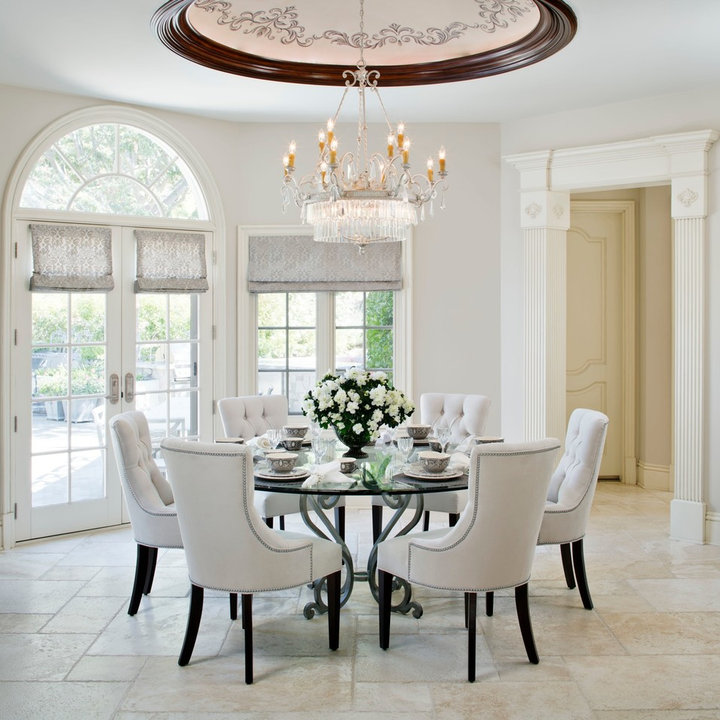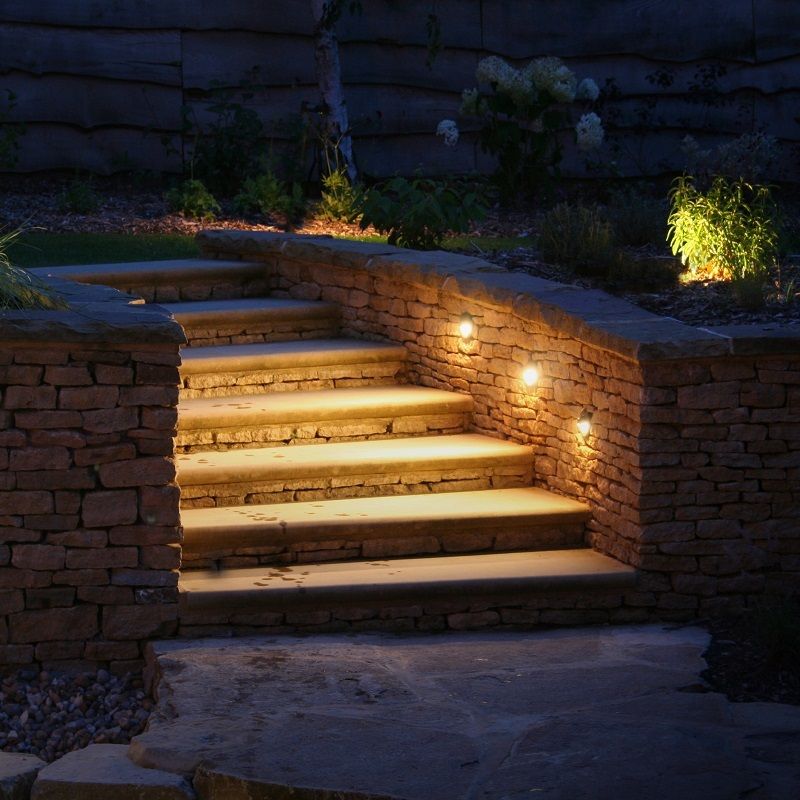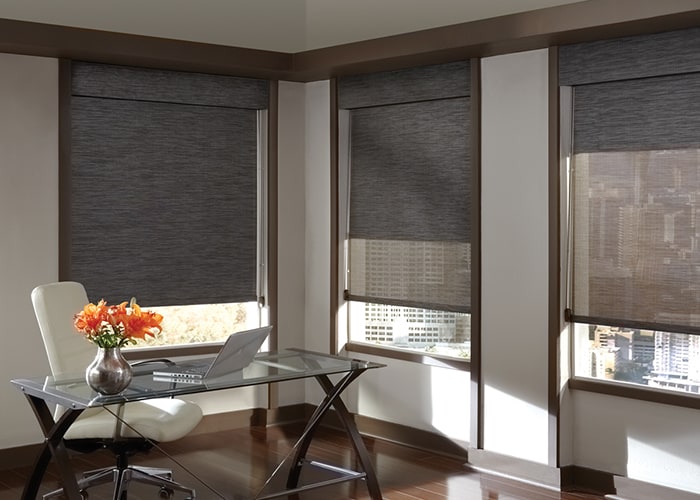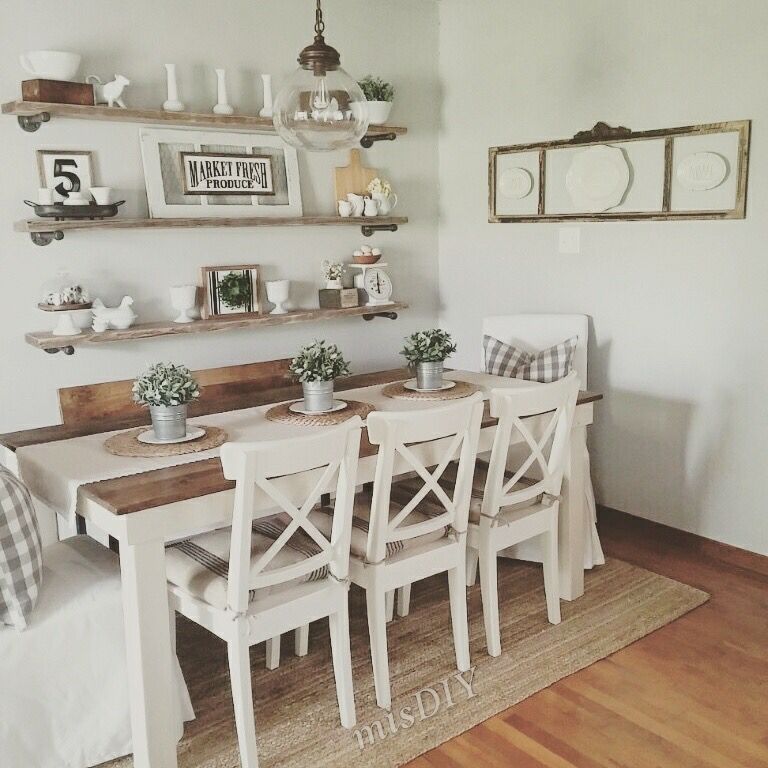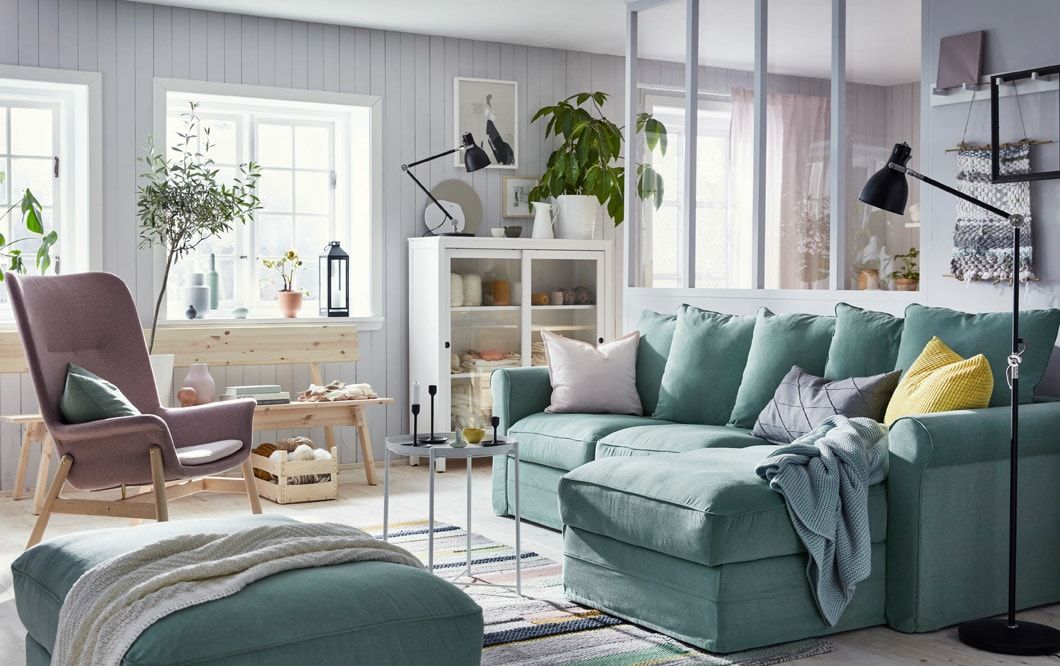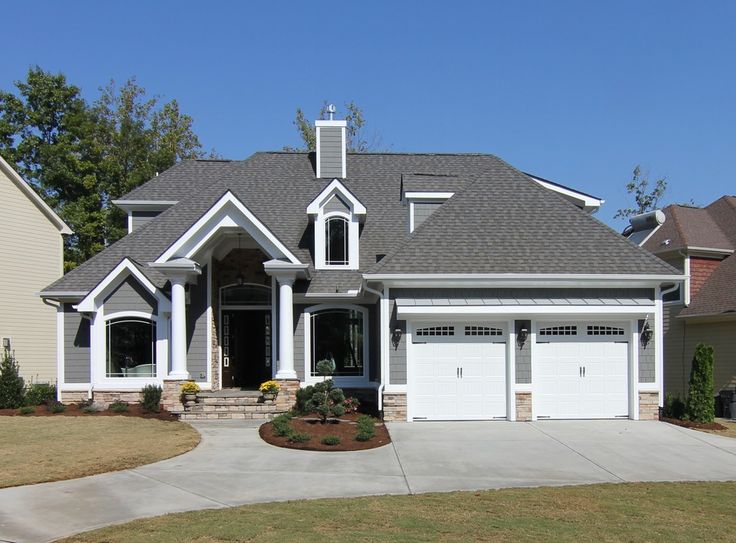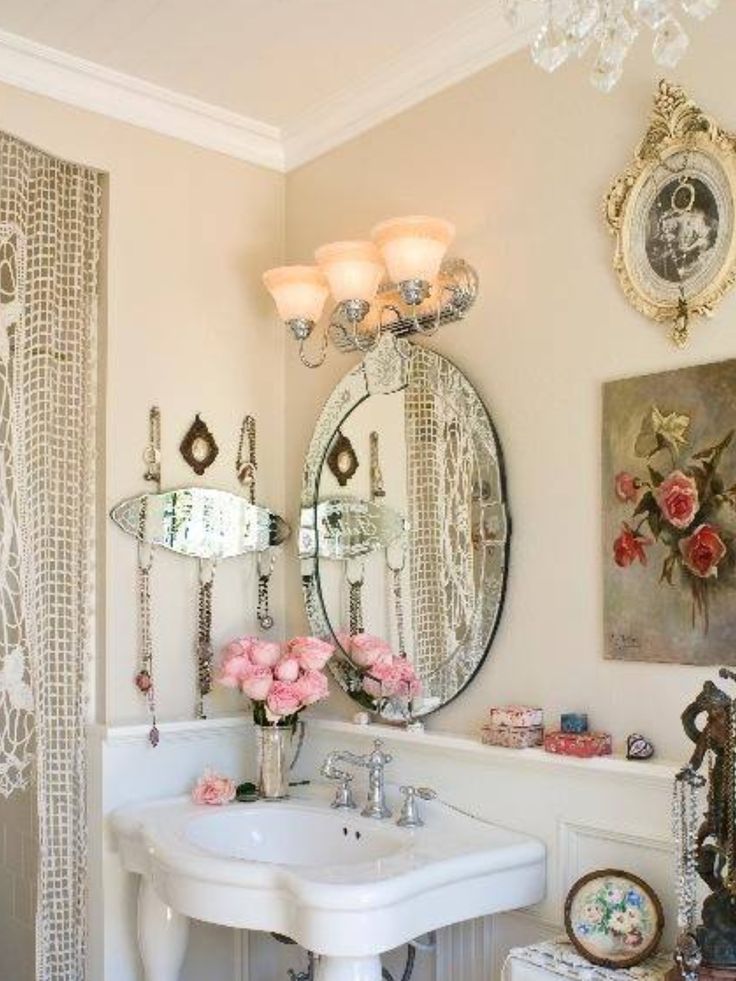French provincial decor ideas
French Provincial Style Decor Guide
Today I want to talk about a French decorating theme known as the French provincial style. This home decorating style is very popular in the countryside of France. While it’s closely associated with French country decorating, I think this style is much more feminine and country chic.
French Provincial Style Decor
The essence of French provincial decor lies in its embracing different genuine French themes that fall between comfortable and homely and outrageously luxury styles. The features common to this style include decorative elements, captivating symmetrical designs, and classic colors.
While it is a mix of country-style lifestyle with opulent panache, today it comes with lighter colors, the latest touches, and polished designs. Find out more about this elegant decor style in the following lines.
What is the French Provincial Style?
This style is famous for being able to complement both informal and formal spaces. The casual forms of this decor style can be seen in present-day French farmhouse-style homes. These homes feature a perfect balance of comfy elegant fabrics, dominance of whites, and unsophisticated country textures. Stones, raw wood, bricks, and exposed beams are accents commonly found on the exterior and interiors of these homes.
The origin of the French provincial decor dates back to the 17th-18th century when such decor was common in the southern side of France. During this period the furniture makers living outside Paris would work to reproduce the embellished furniture found in Paris. However, due to the lack of proper materials and tools, these furniture makers could not recreate the same output. That is the reason why furniture belonging to the French provinces missed out on the minute details and provided a more rustic and distressed look instead of thorough elegance.
Here are some characteristics common to the French provincial decor that you can use for getting innovative with your home interior style.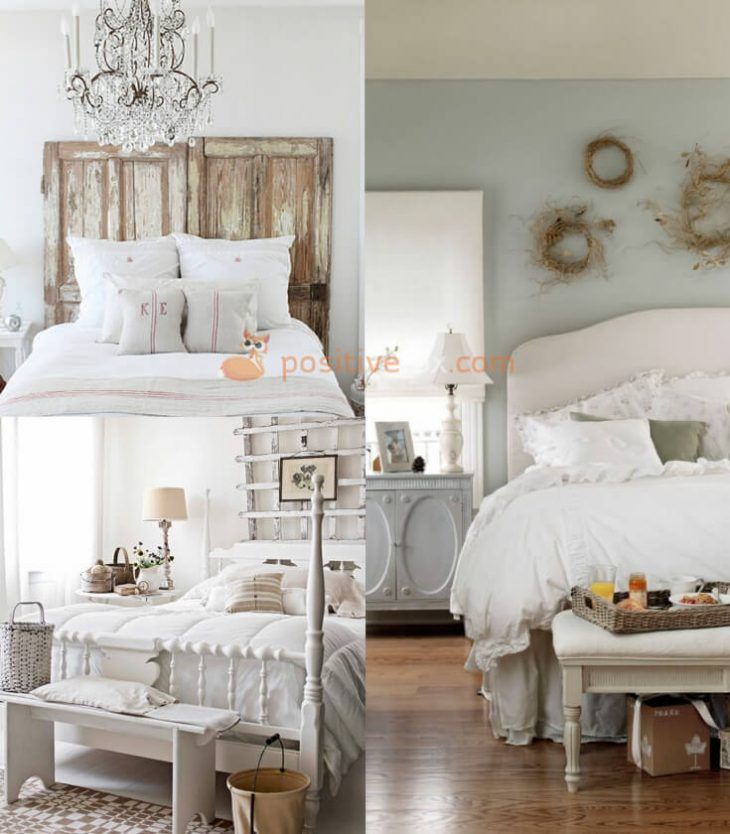
JavaScript is currently disabled in this browser. Reactivate it to view this content.
French Country Armoires
Armoires can be described as enormous storage furniture pieces used for storing away anything that you don’t want to be seen including linen, clothes, old TV set, etc. French country armoires are a great example of French country style furniture, and superbly blend function and form in a pleasing way.
@lunatiquesThese look of large furniture pieces are mellowed down by the sophisticated French touch. Armoires used in French farmhouse decor are made using natural wood with intricate carvings that embalm a personality in them. Other armoires are painted over time, and when the paint peels off, these pieces reflect a pleasing distressed look. Another option is to go for whitewashed wooden furniture pieces that feature French country decor.
Furniture ideas would include beds with cane back, sofas that are beige tufted, vintage wooden beds, Louis armchairs, pedestal tables that are round in shape, and wooden wardrobes with large mirrors.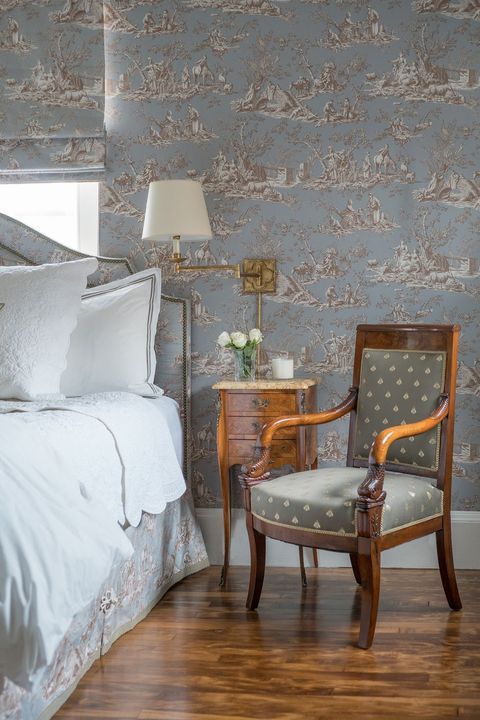
Vintage Gold Mirrors
Mirrors are significant in the French provincial decor because they (apart from reflecting your image) come in frames to reinforce the French provincial style, and because they magnify the airy and breezy aspects of provincial homes.
petitehausYour focus should be on ornate gold-edge French mirrors with eye-catching accents like vintage metallic mirrors. The aim is to make the mirror more of an artwork than a piece with a reflective surface. Additionally, you may include a number of small-sized mirrors to accentuate the overall look, but a big gold mirror with a vintage look will do the job for you. Place them elegantly in locations like drawer chests, headboards, or even tables to create a classy but simple look.
Embroidery Fabrics
One important feature of French provincial decor is the use of embroidery. This skill was taught to female members of society at that time so that every household would include some unique, intricate, and captivating patterns.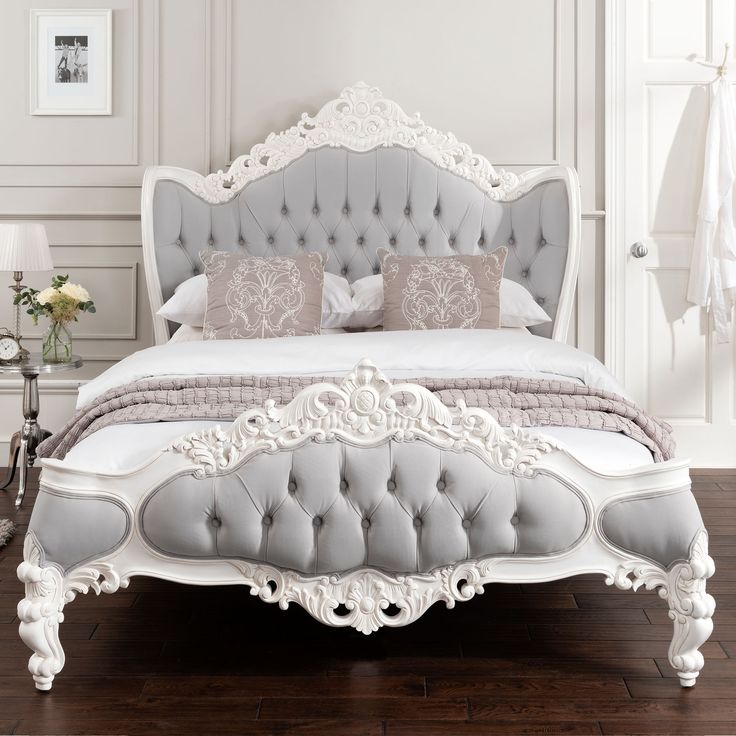 To keep in line with this theme you must opt for heavily embroidered fabrics. Everything from your curtains and pillows to linens and bed sheets needs to be embroidered. To accentuate this feature, you can opt for lacework on your fabrics. This too was commonly found during the 17th-18th century.
To keep in line with this theme you must opt for heavily embroidered fabrics. Everything from your curtains and pillows to linens and bed sheets needs to be embroidered. To accentuate this feature, you can opt for lacework on your fabrics. This too was commonly found during the 17th-18th century.
Gray Blue Wall Paint
When speaking of colors, this style finds its inspiration in the French countryside decoration. The provincials were unable to afford colorful articles found all over the continent, most of the colors they adopted were from what they saw around them. That is the reason why pastel and soft shades are common to this theme.
In French provincial decor, the walls must be painted in pastel and soft shades of colors like beige, gray and blue. An interesting twist to add both these colors would be to split the wall coloring into two parts, with the upper half painted in either white or gray, and the lower half (that measures up to the height of the chair rail) painted in dark blue or red. If you go for white instead of gray, you can opt for tones like stone, cream, or ivory. For the blue, go for midnight blue, aqua, or cornflower.
If you go for white instead of gray, you can opt for tones like stone, cream, or ivory. For the blue, go for midnight blue, aqua, or cornflower.
Wicker and Cane Furniture
The use of cane furniture is casual but elegant in this theme. Since the French provincial decor focuses on a welcoming, rustic and natural, and soft color palette, white-colored cane furniture blends perfectly with this style. White-colored cane furniture pieces provide sophistication and charm to the French interior style, boosting the aesthetic appeal of the overall decor.
@diego_delgadoeliasA white Louis-style side chair works to imbue simplified elegance and glamour into your room. This is how you can balance function and style perfectly, which is a trait of this decor theme. Other ideas include distressed white cane chairs for the dining room or kitchen (with a neutral palette and colorful accents around these furniture pieces), and a white-colored cane bed to add period style and opulence to your bedroom.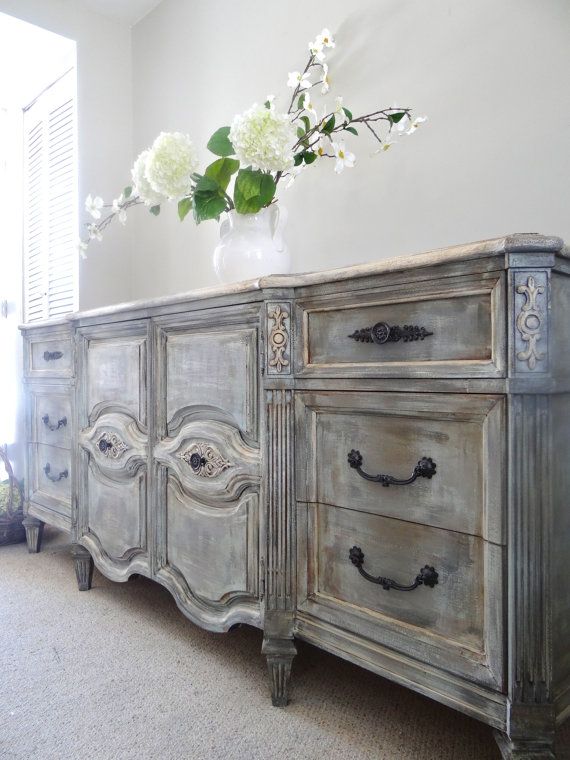
Toile Wallpaper
The French provincial style decor always includes some toile wallpaper which gives a room a fanciful feeling. From de Gournay to reproductions, you can find some stylish toile wallpaper to decorate the walls of your French provincial home.
Linen Textiles
The trend of French provincial decor is rooted in natural and countryside environments, which is why linen is commonly used on furniture and textiles for this particular theme. The French have been proudly producing quality linen for centuries to supply to the entire world.
@rayboothdesignLinen slipcovered furniture and linen bedding are great ways to infuse the French provincial style element into the decor of your house. Consider opting for linen bed sheets with textured and natural crumples to complement your weathered timber. Go for natural, softer shades of bright colors to contrast the dark wood color of the surrounding furniture.
Crystal Chandeliers
There’s no better way to illuminate a French provincial home than by using an antique crystal chandelier.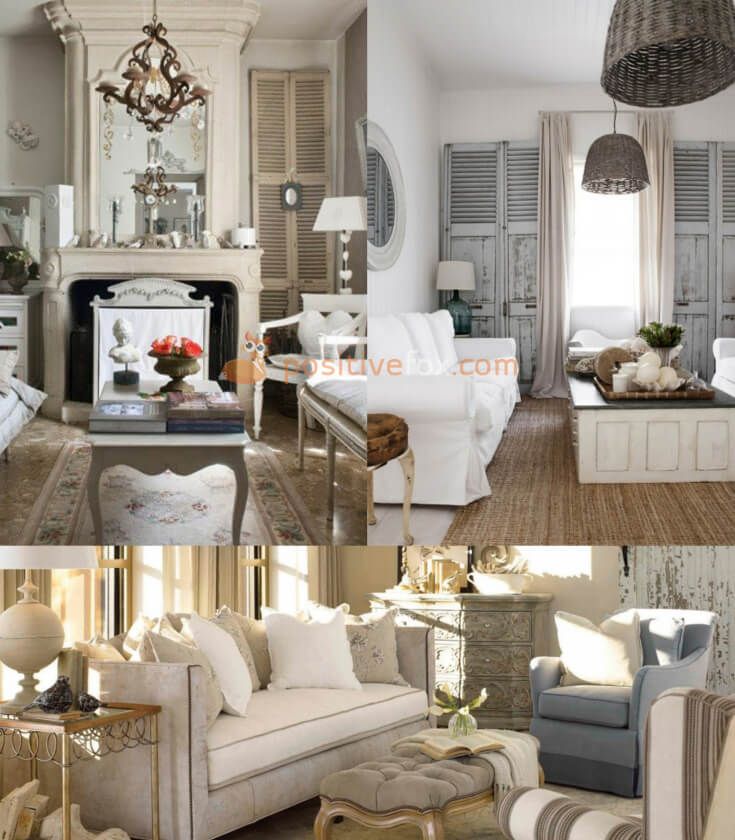 These vintage lighting fixtures give a touch of elegance to any room they appear in.
These vintage lighting fixtures give a touch of elegance to any room they appear in.
French Country Decorations
Choosing the most appropriate decorations can accessorize your French provincial decor the right way. Think of beautiful French rugs to cover the floor space while providing warmth to the space. Light colors are great for combination with the rest of your home decor. Flowers are amazing decorations that perfectly suit the French provincial style. Either opt for fresh flowers or top-notch dried flowers to keep your home decorated all year round.
@cat_in_franceOpulence can be showcased with the addition of family pieces and heirlooms, or antiques to reflect the history of your home. Other decorative accessories that you can add are wall clocks (large), small clocks for the cabinets or table, candlesticks, chandeliers, fruit bowls, etc. However, remember that no matter what decorations you use to accessorize your home, it should include the distressed look signature of the French provincial decor.
Hopefully, now you have a better understanding of the classy French provincial style for home decor. All you have to do is prioritize a distressed and weathered look, specific furniture type, and a natural, soft palette that is key to this theme.
The Ultimate Guide To French Provincial Decor
Paul Maguire/Shutterstock
By Diana Vilic/Updated: June 27, 2022 12:59 pm EST
With the resurgence in popularity of coastal and cottagecore, another interior trend is making its way back into the spotlight: French provincial. According to Kate & Laurel, French provincial is a decor trend that gained popularity during the 1600s in Normandy, Provence, and Brittany. The design took its inspiration from the grand beauty of Versailles architecture and centered around bringing wealthy glamor to non-aristocratic members of society. According to House Beautiful, the trend made its way to America after WWI during the 1920s and again during the 1960s when soldiers started taking inspiration from the elegant style and requesting french ranch style homes.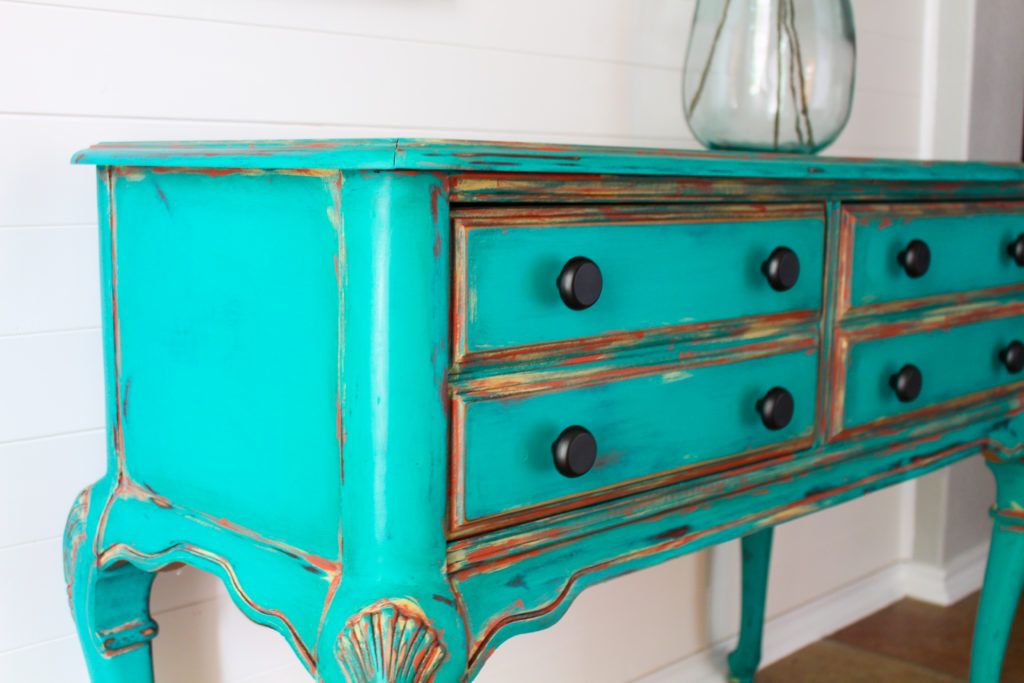
Commonly misidentified as French country, French provincial focuses a bit more on luxury while French country focuses on rustic appeal. However, these two trends work together in modern-day interior design to bring a cozy, hygge-inspired dimension into homes (via My Chic Obsession). This interior style is the perfect blend of costal minimalism and French regency, making it glamorous without having a maximal feel.
Play with rustic woods
Med Photo Studio/Shutterstock
A common theme found in both French country and French provincial is using wood in your home, especially with furniture. According to Home Questions Answered, French provincial furniture was often made from apple, beech, pear, peach, and oak wood because they were affordable and easy to obtain in French provinces. Drawing inspiration from the French regency, furniture pieces often had carvings or fabric embroidery that showcased landscapes and mythological scenes.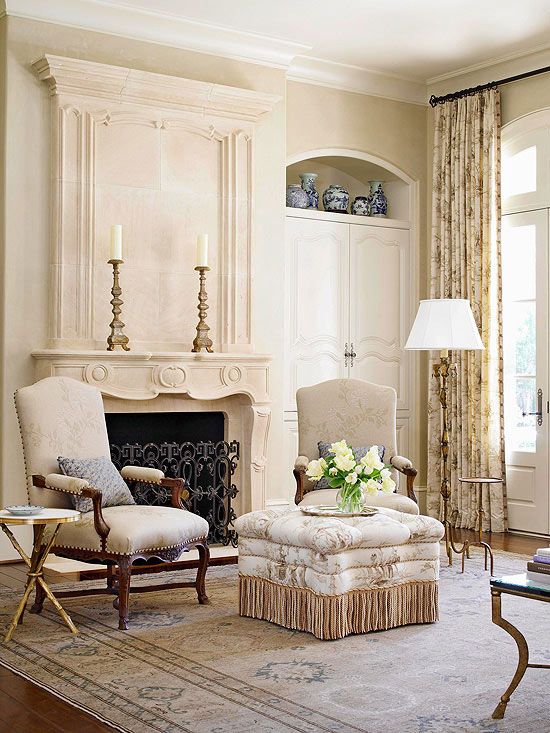
According to Better Homes and Gardens, a great way to decorate with vintage wood furniture is to repurpose it for more modern use. This can include using a wooden dresser as wine storage or an armoire to hold linens in a hallway. Another way to incorporate wood into your home is to mix wood in various tones. Many people are intimidated when decorating with vintage wood because every piece is aged and seems to have different undertones. As a general rule of thumb, wood pieces can be mixed as long as the dominant undertone is showcased in the room in another way. For example, if you're decorating with mixed furniture, but most have a yellow undertone, focus on using fabrics or linens in the room that are on the warmer side.
Use neutral tones
Followtheflow/Shutterstock
One of the reasons French provincial is gaining popularity is because it uses a very muted and zen-inspired color palette. Rather than using bright jewel tones associated with glam interiors, Brocante Ma Jolie suggests French country and provincial should favor natural and neutral colors. Designers still favor these colors hundreds of years later because they're so timeless and inviting. Additionally, these specific neutral colors match with virtually any interior, allowing clients to customize their home as many times as they want without having to repaint or repurchase pieces.
Rather than using bright jewel tones associated with glam interiors, Brocante Ma Jolie suggests French country and provincial should favor natural and neutral colors. Designers still favor these colors hundreds of years later because they're so timeless and inviting. Additionally, these specific neutral colors match with virtually any interior, allowing clients to customize their home as many times as they want without having to repaint or repurchase pieces.
The French provincial color scheme includes a few different palettes. The first focuses on complementing items that can't easily be changed, such as flooring. This includes ivory white or ecru, cream, beige, linen, gray, taupe, and black. These colors make a space appear brighter or more toned down, making decorating easier. For accents, faded colors like light green, ochers, French blue, mauve pink, and lavender are used. These colors are typically painted using chalk-like finishes or found in faded and dusty linens.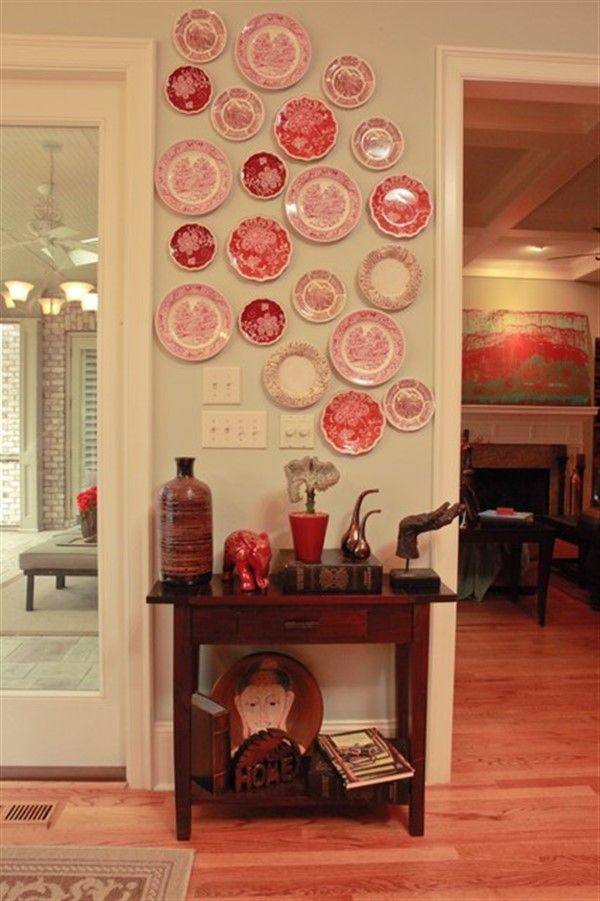 The general rule in French decor is warm colors remind you of warm places and make large rooms cozier, while cool colors remind us of the outdoors, making small rooms larger and more relaxing.
The general rule in French decor is warm colors remind you of warm places and make large rooms cozier, while cool colors remind us of the outdoors, making small rooms larger and more relaxing.
Install parquetry flooring
Dmitry Kalinovsky/Shutterstock
A favorite throughout French architecture is parquetry flooring. Parquetry flooring is a geometric mosaic of wood used in decorating, commonly on flooring. According to Wood and Beyond, this flooring style was popular in the mid-1600s and featured squares, triangles, and lozenges using blocks of wood. Traditionally, patterns featured stars or mosaics of sunshine, but today it's commonly used to create herringbone patterns. For parquetry, contrasting woods are mixed together to enhance the design and are glued down using a cold adhesive.
According to The Spruce, parquetry wood flooring costs on average $20 to $45 a square foot to install. However, there are peel and stick options available that make the trend affordable and easy to maintain. If you choose to use peel and stick flooring, it's important to remember that cleaning can be more difficult with this material because it's held on by pressure and glue, which is vulnerable to warping and cracking.
However, there are peel and stick options available that make the trend affordable and easy to maintain. If you choose to use peel and stick flooring, it's important to remember that cleaning can be more difficult with this material because it's held on by pressure and glue, which is vulnerable to warping and cracking.
Have a statement kitchen
Katrina Era/Shutterstock
One of the most notable features in French decor is a statement kitchen that the home centers around. According to House Beautiful, French provincial kitchens commonly have limewashed cabinetry and paneling, giving the wood a soft white cast and creating an elegant atmosphere. This trend is easy for any level DIYer to take on. Simply create a limewash and brush it onto your prepped cabinets (via Real Homes). Limewashing maintains the look of natural wood and gives it an extra level of protection and color. Some washes also come with pigment which brings out the natural grain in your wood.
French decor also features whimsical embellishments to showcase the architecture. This can be achieved by painting a mural on your walls of scrolls or gradient art, or applying a peel and stick wallpaper that features French-inspired designs. According to Better Homes and Gardens, French provincial kitchens also feature matte and neutral based colors, which help create a bright space. It's also common to see natural stone used as backsplashes in these kitchens. Designers favor granite and marble because they're so timeless, but popular white subway tiles can also create a complete look.
Decorate with armoires
PatriciaGH/Shutterstock
A classic staple in French decor is the armoire. According to Chairish, traditionally, an armoire is a large cupboard usually used to organize clothing and linens or store weapons and armor, hence its name. Nowadays, armoires are ornate pieces of furniture that can be modified to be entertainment centers, cupboards, storage, and closets.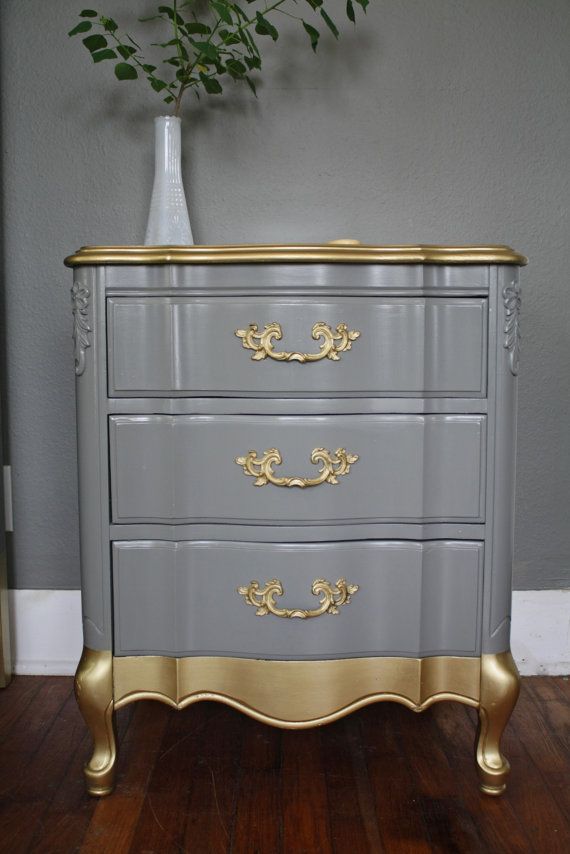
If you want to incorporate an armoire into your home, there are so many options to make this large piece of furniture functional and aesthetically pleasing. According to ConfettiStyle, an armoire can be used to create a vignette and showcase art, baskets, or memorable family heirlooms. Additionally, you can remove the doors of an armoire to make a bookshelf that has regency flair. Armoires can also be retrofitted to showcase crystal and dishes in a dining area or kitchen (via Houzz). They're also a great way to provide visual interest in a space that does not have a fireplace or a built-in fixture point. They were designed to be customizable and to come apart, so you should have no issue customizing even the oldest armoire to fit your current needs.
Incorporate wrought iron accents
Hendrickson Photography/Shutterstock
Wrought iron is an interior designer favorite and a staple of French designs. According to Timeless Wrought Iron, wrought iron itself comes in two types of iron — charcoal and puddle. The kind of iron depends on the period the piece was made. Charcoal iron was popular toward the end of the 18th century, while puddle iron was common during the industrial era. Initially, wrought iron became popular in the 18th and 19th centuries despite existing since ancient Egypt because it blended masculinity with classical minimalism (via L'Essenziale). Because wrought iron was easily accessible in the provinces and offered the luxurious feel people wanted, it quickly grew in popularity.
According to Timeless Wrought Iron, wrought iron itself comes in two types of iron — charcoal and puddle. The kind of iron depends on the period the piece was made. Charcoal iron was popular toward the end of the 18th century, while puddle iron was common during the industrial era. Initially, wrought iron became popular in the 18th and 19th centuries despite existing since ancient Egypt because it blended masculinity with classical minimalism (via L'Essenziale). Because wrought iron was easily accessible in the provinces and offered the luxurious feel people wanted, it quickly grew in popularity.
A great way to bring wrought iron into your home and create a French provincial style is to use wrought iron cabinet hardware and doorknobs (via SFGate). You can also use wrought iron in tables to showcase glass or wood surfaces or in French-style bistro outdoor tables.
Use gold accents throughout the space
FotoHelin/Shutterstock
A common theme in French provincial design is using polished metallic accents, usually gold or brass.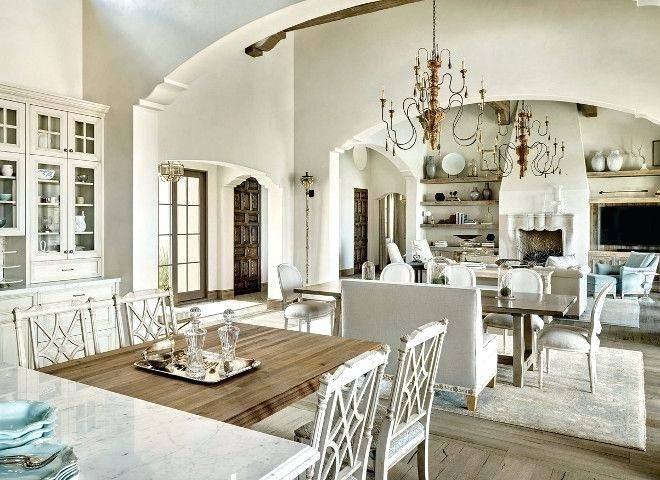 According to The Spruce, a great way to add gold accents into your home is to upgrade your exposed plumbing with gold pipes or spray painting the pipes and hardware you already have. You're also able to add little details like a gold handle on the toilet or a gold trash can to work in gilded accents without being overly glam. If you wanted to add gold details to a common area without entering art deco or regency territory, you can also spraypaint bookends to be a muted shade of gold, add gold tape or leaf onto a vase, or work in gold accents in the kitchen in the form of bar stools or cabinet hardware.
According to The Spruce, a great way to add gold accents into your home is to upgrade your exposed plumbing with gold pipes or spray painting the pipes and hardware you already have. You're also able to add little details like a gold handle on the toilet or a gold trash can to work in gilded accents without being overly glam. If you wanted to add gold details to a common area without entering art deco or regency territory, you can also spraypaint bookends to be a muted shade of gold, add gold tape or leaf onto a vase, or work in gold accents in the kitchen in the form of bar stools or cabinet hardware.
If you choose to spraypaint existing pieces gold, Bob Vila suggests being careful when picking shades. A lot of people run into the problem of their gold spraypaint drying bronze, and while this does fit into French provincial, it may not be the look you're personally going for. If you're looking for true gold, pick a spraypaint that markets itself as pure or vintage gold, not one with a red or orange tint.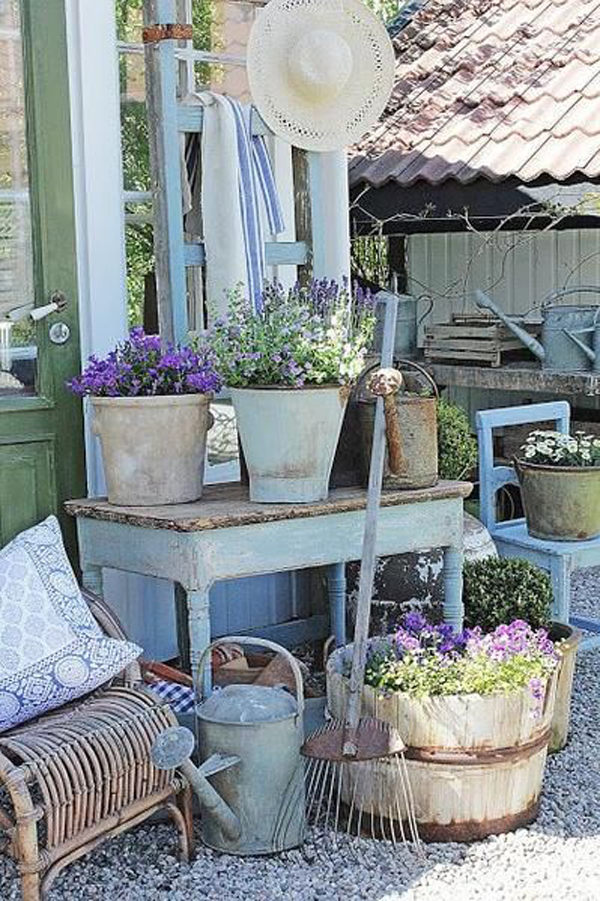
Look for cabriole legs
Mujijoa79/Shutterstock
The Spruce defines cabriole legs, or bowlegs, as a furniture leg with its top curving outward while its bottom curves inward, creating an ornamental footed design. The cabriole leg is commonly fashioned with a ball on the end or a claw-style foot. Cabriole legs gained popularity in Europe in the 18th century, especially in France and England (via British Antique Dealers' Association). In the U.S., the most common design is referred to as Queen Anne Style and is seen in virtually almost all furniture from that period of history. Queen Anne furniture has cabriole legs that are thinner on the ankle and have a pad-style foot (via SFGate). There is also Chippendale Style, which was named after the furniture designer Thomas Chippendale, who made the signature shape famous. Chippendale style is similar to Queen Anne, but usually has a ball and claw foot and is larger in scale.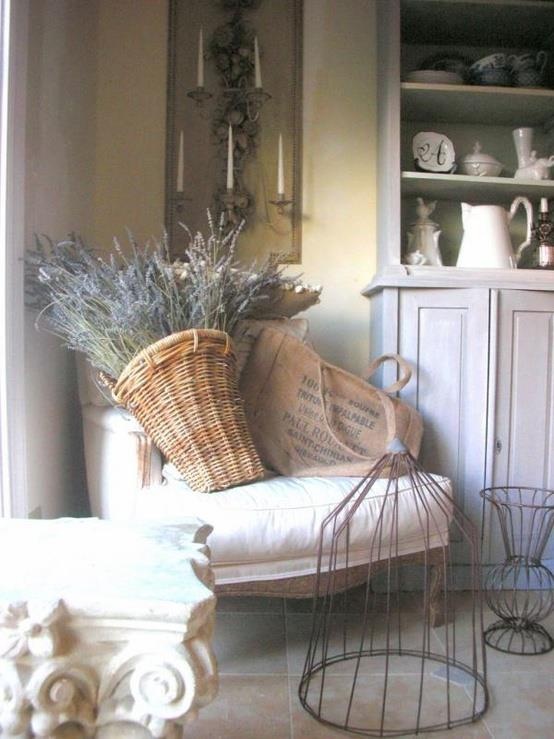 Additionally, Louis XV style legs are shorter versions of the Queen Anne style and have intricate details and carvings, making them perfect for French provincial rooms.
Additionally, Louis XV style legs are shorter versions of the Queen Anne style and have intricate details and carvings, making them perfect for French provincial rooms.
While many vintage and modern pieces have a cabriole-inspired design, it's also easy to make or purchase cabriole legs for your existing pieces. According to John Malecki, anyone can make cabriole legs — all they need is a template and a bandsaw.
Install exposed beams
Breadmaker/Shutterstock
A common feature in French provincial and French country homes is exposed or overhead beams. According to Bob Vila, overhead beams were a standard element in construction that featured wood framing because it was functional. The larger beams helped support the weight of upper floors and made contracting easier. Because of this, exposed beams started appearing in cottages and castles in Europe, becoming a staple in their designs.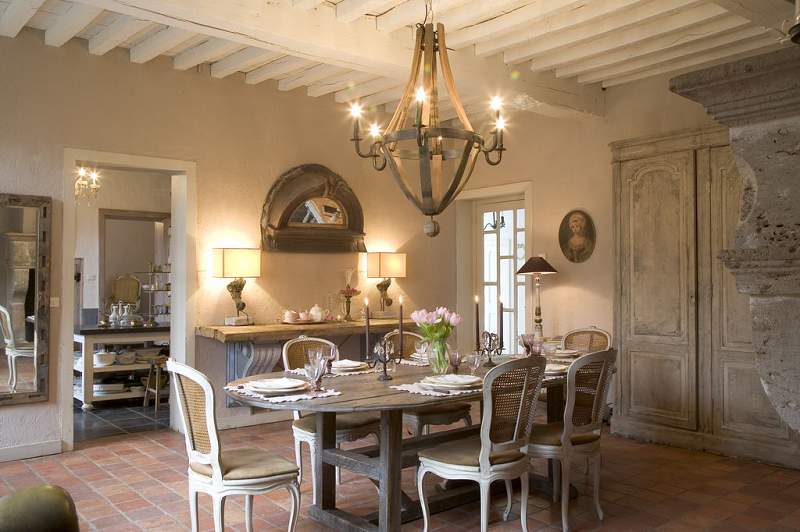 In the 1800s, exposed beams were made smaller and more aesthetically pleasing due to advances in construction.
In the 1800s, exposed beams were made smaller and more aesthetically pleasing due to advances in construction.
Nowadays, this style of framing isn't as common, and exposed beams are seen as an aesthetic choice over a structural one. Installing wood beams can cost upwards of $22 to $30 per linear foot (via Homewyse). Luckily, you can fake the look of wood beams without having to install actual wood. According to This Old House, high-density polyurethane is used to make faux beams that are lightweight and easy to install. You can also make affordable fake wood beams yourself by using plywood or common board and fashioning it into a U-shape (via Simply Aligned Homes).
Decorate with antique furniture
New Africa/Shutterstock
A common staple of French provincial decor is using vintage pieces in your space. This could be a vintage interior door, vintage shutters, or a secondhand armoire that is converted to fit your needs.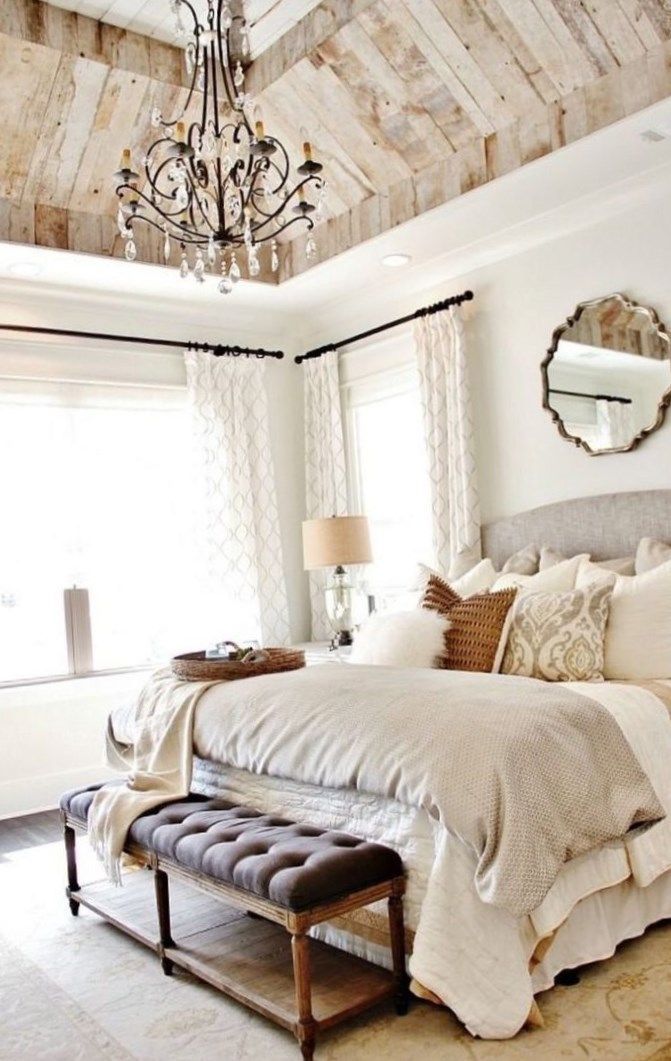 A popular style of furniture associated with modern French provincial decor is the Queen Anne style. According to Aaron's Touch Ups, the Queen Anne style was originally produced between the 1720s and 1750s, but wasn't mass produced in the United States until 1800. These furniture pieces were popularly made with walnut, cherry, or maple, but around the 18th-century, pieces were made using mahogany. Collectors warn that if a piece uses wood like pine, ash, beech, or cedar, the item may not be entirely original or a knock-off produced at a later date.
A popular style of furniture associated with modern French provincial decor is the Queen Anne style. According to Aaron's Touch Ups, the Queen Anne style was originally produced between the 1720s and 1750s, but wasn't mass produced in the United States until 1800. These furniture pieces were popularly made with walnut, cherry, or maple, but around the 18th-century, pieces were made using mahogany. Collectors warn that if a piece uses wood like pine, ash, beech, or cedar, the item may not be entirely original or a knock-off produced at a later date.
According to Veranda, decorating with vintage pieces does not have to be intimidating or overly trendy. A great way to work in vintage pieces is to find something you're emotionally attached to, even if it doesn't match the style of your home. It's also recommended that vintage pieces be statement pieces, like an old table or light fixture. Vintage furniture can also be repurposed or restored to match the style of your home. Wood can be stained, pieces can have their legs or doors cut off, and can be reused as a bookshelf, closet, desk, or end tables.
Install window dressings
New Africa/Shutterstock
According to Stoneside, French country and provincial use chateau-inspired window treatments. These window treatments are known for proportioned shades or drapes inspired by nature, making them a staple of elegance amongst interior designers and decor lovers. Nowadays, this look can be adapted to any home — French countryside or not — by using roman shades. Roman shades are an alternative to blinds using fabric instead of plastic, making them feel tailored and custom. In a provincial-style home, it's recommended that colors are kept natural. Most custom drapes are hung higher than the window, making the room appear more voluminous. Additionally, simple sheers are mixed with heavy fabrics to create a luxurious layered look.
Because French provincial was about displaying wealth, you could also decorate windows using luxurious fabrics, like silk or satin.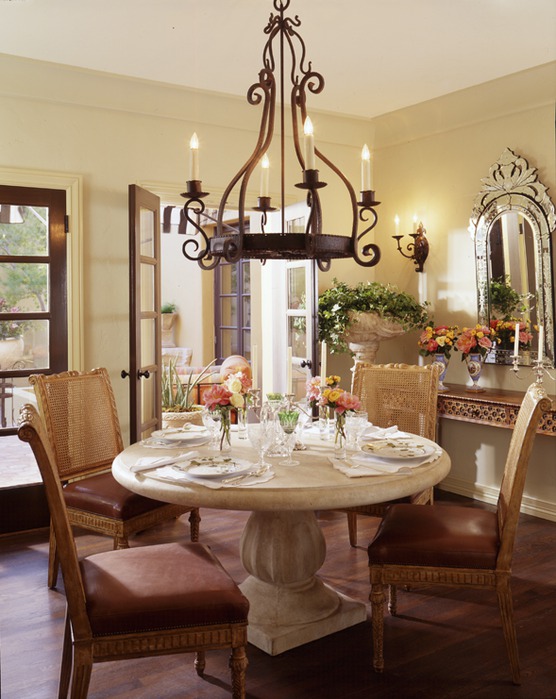 When picking sheers or textured drapes, choose oversized window coverings that cascade onto the floor. This allows for the appearance of a larger window while still remaining glamorous and luxurious feeling.
When picking sheers or textured drapes, choose oversized window coverings that cascade onto the floor. This allows for the appearance of a larger window while still remaining glamorous and luxurious feeling.
Farmhouse vs. provincial vs. chateau
Vladeep/Shutterstock
It's easy to get popular French design styles confused with each other. After all, French farmhouse, provincial, and chateau share many similarities and can be adapted into virtually any decor to create an elegant atmosphere. According to Brocante Ma Jolie, the biggest difference between French farmhouse and provincial is the subtle details. French farmhouse focuses on rustic elements, like distressed woods and warm tones, while provincial focuses on bringing out elegant elements despite having rustic and warm decor. Instead of distressed furniture, you'll find gold Georgian mirrors, console tables with iron, or quaint cupboards with scrolling details engraved or varnished into the wood.
On the other hand, chateau differs from the other two in terms of stylistic direction. While it can be incorporated into a farmhouse or rustic home, chateau decor focuses primarily on neoclassical elements. Instead of playing with distressed woods, French chateau was about showing off wealth and ornate pieces. This design uniquely focused on large-scale furniture and accent pieces that looked of high quality and had a high level of detail. This is because decoration during the height of chateau decor was about showcasing social rank, similar to Hollywood Regency in America a few decades later. Homes of wealthy individuals were lined with intricate wall moldings, marble fireplaces, and oversized items like beds or clawfoot tubs.
Milk paint your furniture
Syda Productions/Shutterstock
Throughout classic French decor, there's one element commonly found: white or milk painted furniture. According to This Old House, milk paint is a paint formulated from casein, a protein found in milk. It also uses lime, pigment, and borax. Nowadays, many people are choosing milk paint over traditional stain or acrylic paint for its matte antique finish. Based on the application method, milk paint can offer a polished look or be distressed to achieve a chippy finish, which compliments rooms that are looking to add French rustic flair.
According to This Old House, milk paint is a paint formulated from casein, a protein found in milk. It also uses lime, pigment, and borax. Nowadays, many people are choosing milk paint over traditional stain or acrylic paint for its matte antique finish. Based on the application method, milk paint can offer a polished look or be distressed to achieve a chippy finish, which compliments rooms that are looking to add French rustic flair.
Painting with milk paint is a great way to add color into the muted French provincial palette and refurbish old furniture that may not go with your overall design. If you choose to paint a furniture piece with milk paint, be sure to sand the piece lightly and lightly buff it before painting, which allows the paint to adhere better and ensures it will last for many years. According to My Painted Door, to achieve a slightly chipped finish on your milk paint project, before painting, use a little beeswax on areas where you want the paint to naturally wear off.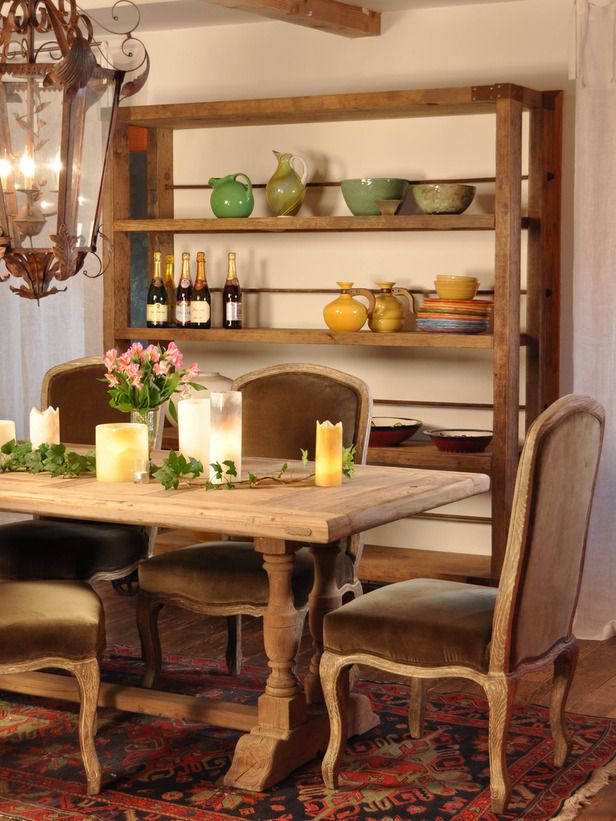 The wax will prevent the color from penetrating fully, leaving the original finish.
The wax will prevent the color from penetrating fully, leaving the original finish.
Play with feminine details
Rawpixel.com/Shutterstock
French provincial decor is centered around traditional feminine decor elements like sculptural furniture, lace, silk, and dainty details throughout the home. According to Essential Home, a feminine room traditionally has soft and muted colors, like pastels and neutrals.While feminine design can incorporate bright colors, it mainly utilizes lighter and nature-inspired shades.
Copper Elm states popular furniture during the provincial era was focused on feminine design details, like curved shapes, gold markings and hardware, and muted milk paint colors. This design trend emerged from the Louis furniture sought after during the 17th and 18th centuries. During that time, the Parisian elite would bring these expensive pieces of furniture out to their countryside cottages strictly because it was expensive to do so, making it the ultimate display of wealth.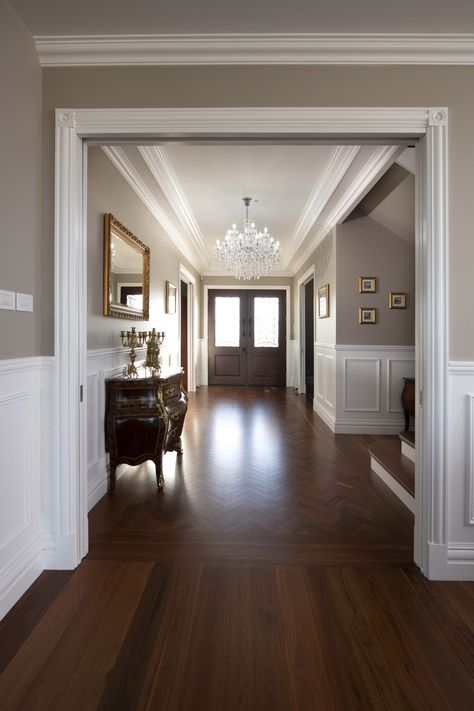 Once the style caught on, French provincial incorporated elements into designs that common citizens could afford. Eventually, claw legs, dainty gold hardware, and sturdy furniture found their way into the provincial homes.
Once the style caught on, French provincial incorporated elements into designs that common citizens could afford. Eventually, claw legs, dainty gold hardware, and sturdy furniture found their way into the provincial homes.
If you're looking to incorporate the same trend into your space, keep function as the main focus. Because pieces of furniture were used virtually every day, function mattered as much as beauty. Provincial furniture is built sturdy with dainty details. Today this can be achieved with IKEA hacks on dressers, installing molding and scrolling onto existing furniture, or swapping legs on a table for something with more shape.
Take inspiration from modern day Parisian designs
Followtheflow/Shutterstock
Even though modern-day Parisian design differs from traditional provincial decor, the traditions that made the design so famous are still found in modern decor. Ultimately provincial decor isn't about following an exact list of decor elements, but rather incorporating traditional pieces and elegant linens and colors to make your home feel luxurious, whether it's rustic, glam, or minimalistic.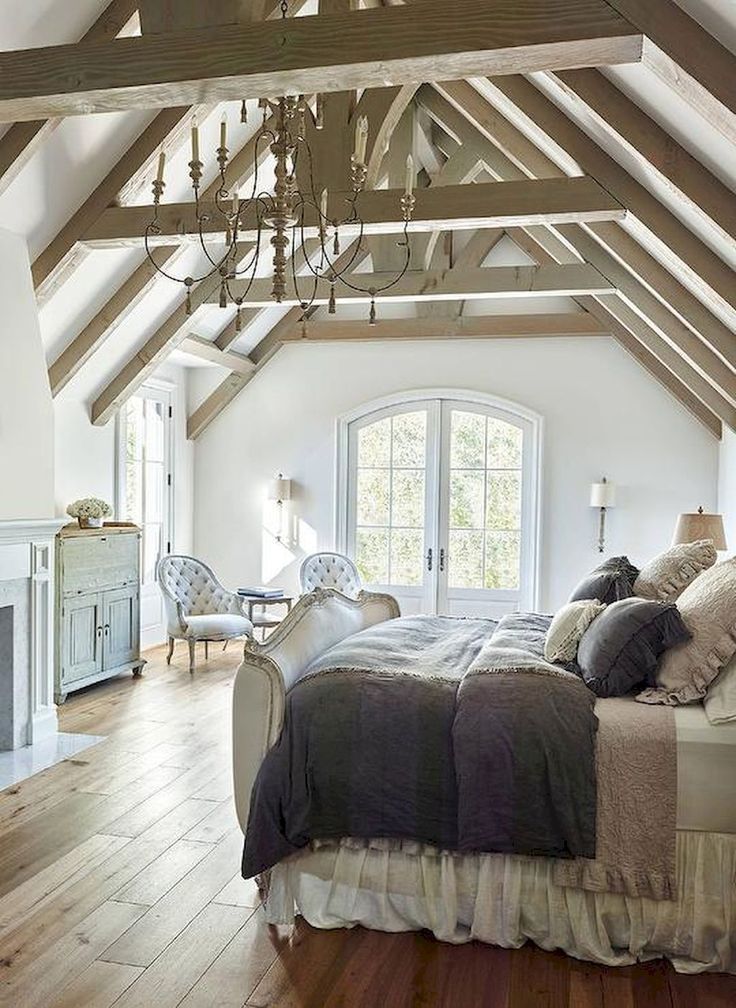
According to Leonce Chenal, Parisian style is known for high ceilings and large windows. But it's also known for marble fireplaces, parquet floors, and muted colors, just like French provincial. If you're looking for a way to make provincial feel a bit more modern or to incorporate it with other design trends, like Scandinavian or glam, Parisian style can offer a clear-cut pathway. Many people may also find they like Parisian style over provincial because of the high emphasis on minimalism and scale. While provincial focuses on large pieces to display wealth, Parisian focuses on large art but minimal furniture, believing the flow of a room shouldn't be interrupted.
French provincial fleur in your interior. Decor in Provence style
Tsugunov Anton Valerievich
Reading time: 5 minutes
Interior and style of a house or apartment designers advise to think over based on the nature and needs of its owners. If you are a romantic person, the Provence style in the interior will emphasize your sophistication in all its glory.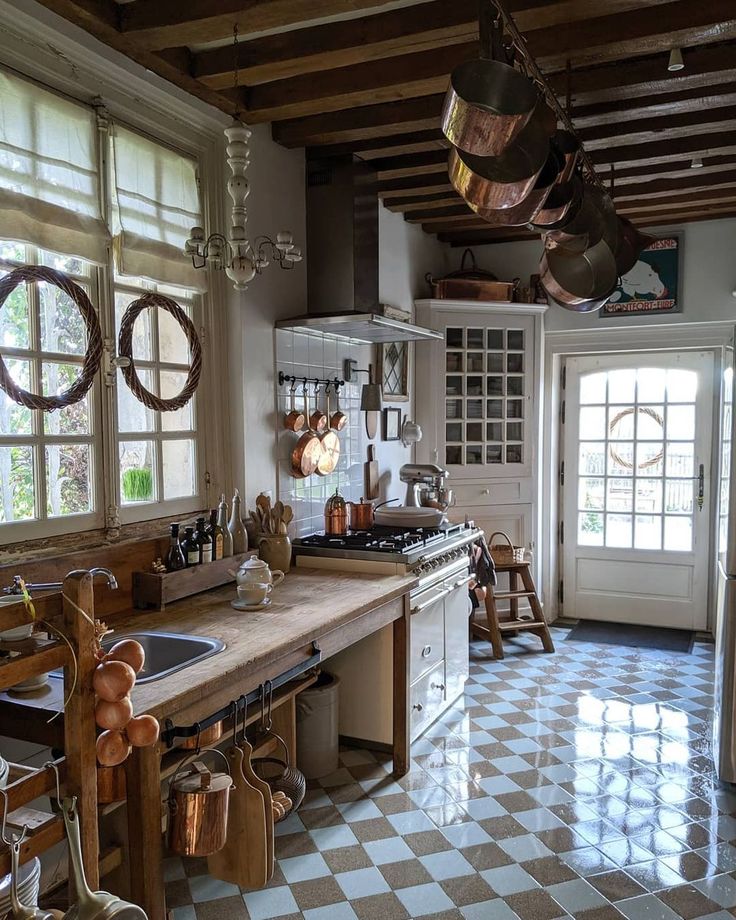 Provencal style, this gentle French daughter of the country family, is distinguished by discreet grace, natural materials and natural shades. The traditional values in the Provence style are simplicity and conciseness, reliability and tranquility. Having decorated your home in this style, you will find an island of silence and comfort in a world boiling with passions and will be able to calmly contemplate the vanity of life, swaying in a wicker chair.
Provencal style, this gentle French daughter of the country family, is distinguished by discreet grace, natural materials and natural shades. The traditional values in the Provence style are simplicity and conciseness, reliability and tranquility. Having decorated your home in this style, you will find an island of silence and comfort in a world boiling with passions and will be able to calmly contemplate the vanity of life, swaying in a wicker chair.
The main features of the Provence style
Provencal style is not a brutal loft or “manly comfort” – a hunting lodge with horns on the walls. In Provence, everything is gentle and naive, fresh and natural. In everything - low-key elegance, harmony and the spirit of antiquity. Furniture and all items of Provencal life seem to have been inherited from a beloved French grandmother.
Provence style in the interior is defined by several features:
- light tones, warm or cool;
- abundance of light;
- antique or antique furniture;
- natural finishing materials;
- floral and floral ornaments;
- embroidery and textile decoration;
- forging, porcelain and ceramics.
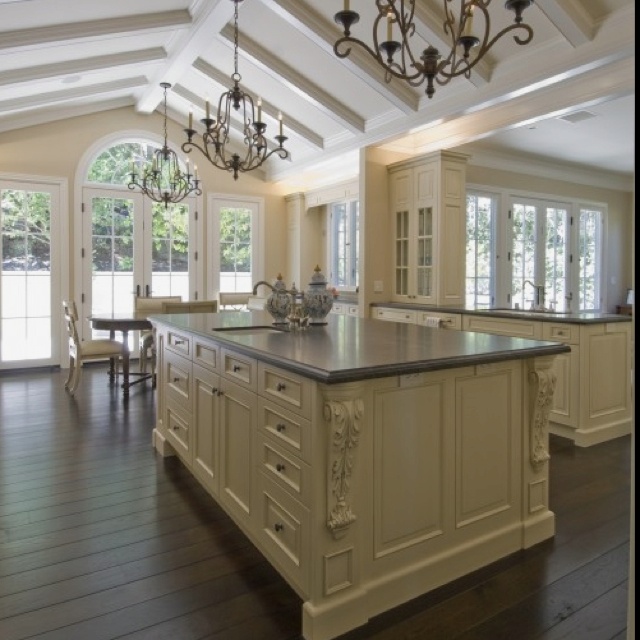
Provence color
Provencal style prefers natural colors - lavender, pale olive, creamy, light beige, muted saffron, blue. Calm, sweet, gentle. Bright accents that contrast with the main color mood will help to emphasize the power of pastel colors in the Provence-style interior. These can be decorative elements a few tones richer than the main color of the interior, or a combination of mustard and olive classic Provencal colors with orange or green.
USEFUL INFORMATION: Drywall niches in the hall and living room (17 photos)
Floor, walls, ceiling
Wall and ceiling decoration in the Provence style implies rough textured plaster or painting in light colors - white, light beige, creamy, muted terracotta, pale green, lavender, as if burnt orange , in the color of the sea wave.
- Walls. Looking through stone or brick finishes is welcome.
As an option - you can clad the walls with a board and paint it. - Pos.
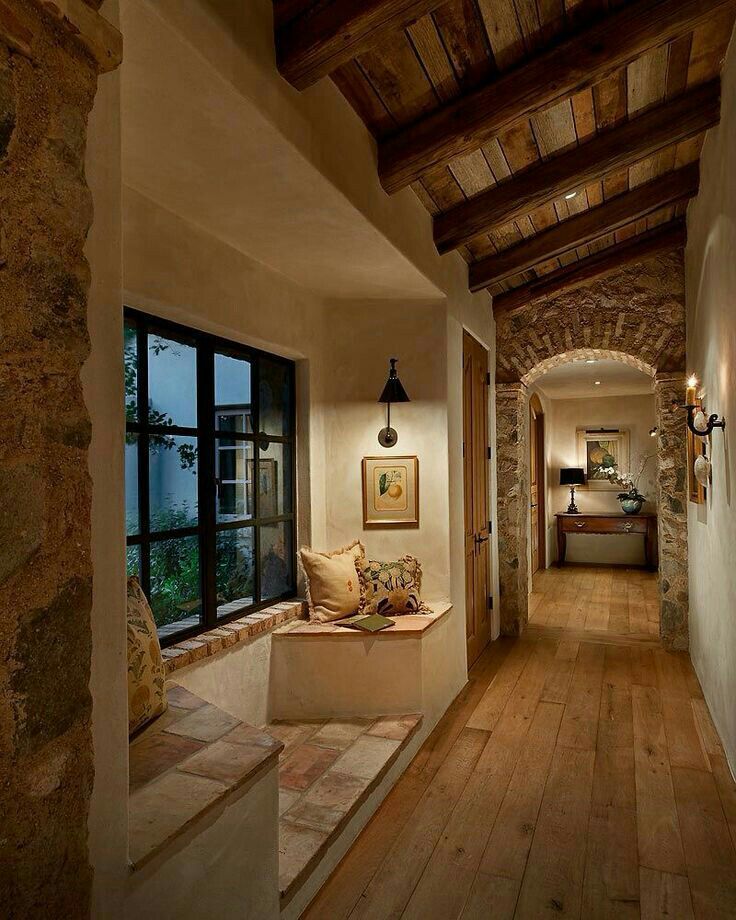 A board or light-colored tile with uneven edges on the floor will create the feeling of a real country house, while chips and scuffs will give an old look.
A board or light-colored tile with uneven edges on the floor will create the feeling of a real country house, while chips and scuffs will give an old look. - Ceiling. Most often, Provence-style ceilings are decorated with beams. Painted with white paint and as if darkened with time, the beams are designed to enhance the feeling of a provincial dwelling in a Provencal interior.
Provencal style in furniture meets all the same basic requirements: aging and naturalness. Scratches and scuffs, irregularities and roughness on the surface of Provencal furniture create the illusion that nature itself has worked here. Delicate tones of facades with a print in the form of hydrangeas, sunflowers or lavender are the main design motif of furniture in the Provence style. She is sweet and graceful, rustic and unpretentious. In Provence there is no pretentiousness and pathos, everything is clear and without fuss, as it should be in the house of a real peasant.
Important! The aesthetics of Provence is inspired by the spirit of antiquity and harmony with nature.
Therefore, the “combed” Provence, adapted to modern country life and touched by gloss, looks like an unsuccessful replica of the original style.
Wardrobes, tables, chests of drawers, sideboards, sideboards are decorated in delicate colors typical of Provence with floral patterns and decorated with curlicues and carvings. And this charming word from the past - "trillage" - in the Provencal style will be embodied for the hostess of the house into an irreplaceable detail of the interior, the mirrors of which will reflect her beauty three times.
USEFUL INFORMATION: Wall decorating ideas: decorating an apartment with your own hands
The queen of the Provencal bedroom is a wrought iron bed. Openwork, airy metal forging can evoke the most unexpected associations - from an intricate floral weave to your own signature. Such a bed is an unexpected drop of luxury in a simple rustic Provencal interior, very appropriate and in tune with the general style.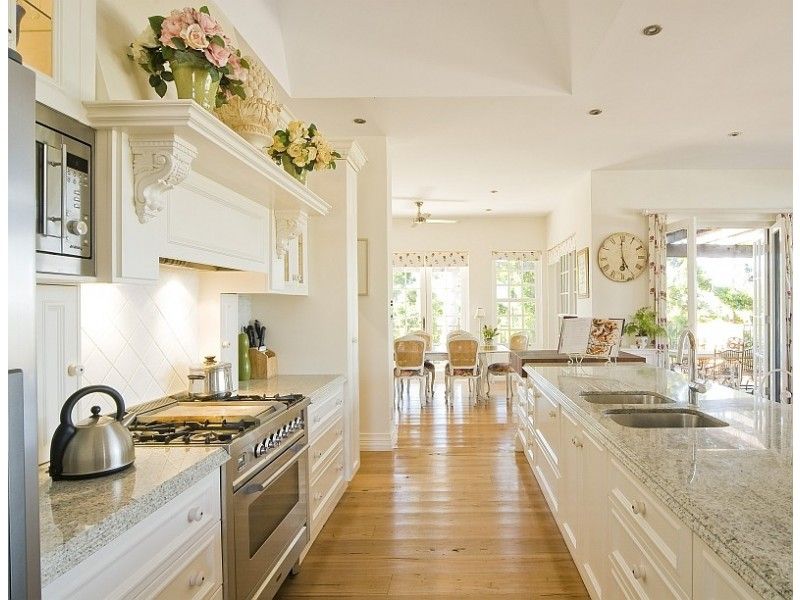
A canopy over the bed will bring a special charm to the Provencal bedroom, the practical advantages of which compete with the decorative ones. The fabric for a Provence-style canopy should be light, flowing, easily breathable - silk, chintz or linen.
Textiles in Provencal interior design
If you want to feel real Provencal comfort, pay attention to one of its main components - textiles. Light tulle, floral curtains and coarse natural linen tablecloths will be the main strokes in the home reproduction of the French south. Towels with monograms, bed linen with rich embroidery and ruffles, napkins in typical Provence colors, chair covers, lampshades, planters, embroidered cushions will drive more than one “Turgenev” young lady crazy. Such an abundance of "hand-made" accents will create a true Provence atmosphere in your home.
Boti embroidery is an exquisite nuance of the Provencal style.
With its help, quilted bedspreads, napkins, covers are made. The buti technique makes it possible to achieve complex embossed patterns that not only decorate textiles, but also endow them with strength and unpretentiousness in use.
Lighting
Soft diffused lighting is the best fit for a Provencal interior. But powerful lamps can scare away the naive charm of a rustic style, destroy romantic serenity. Therefore, it is necessary to select lighting with special care. In the center of a Provencal-style room, you can make an accent with the main light source - a large chandelier with several lamps located at different levels. To vary the intensity of lighting, sconces, floor lamps, table lamps are used. Multi-level and skillful zoning of lighting will emphasize the gentle charm of the Provencal style.
USEFUL INFORMATION: What is the best wallpaper for a child's room?
Style details
Let's rephrase the common phrase - Provence lies in the details - and pay attention to the details.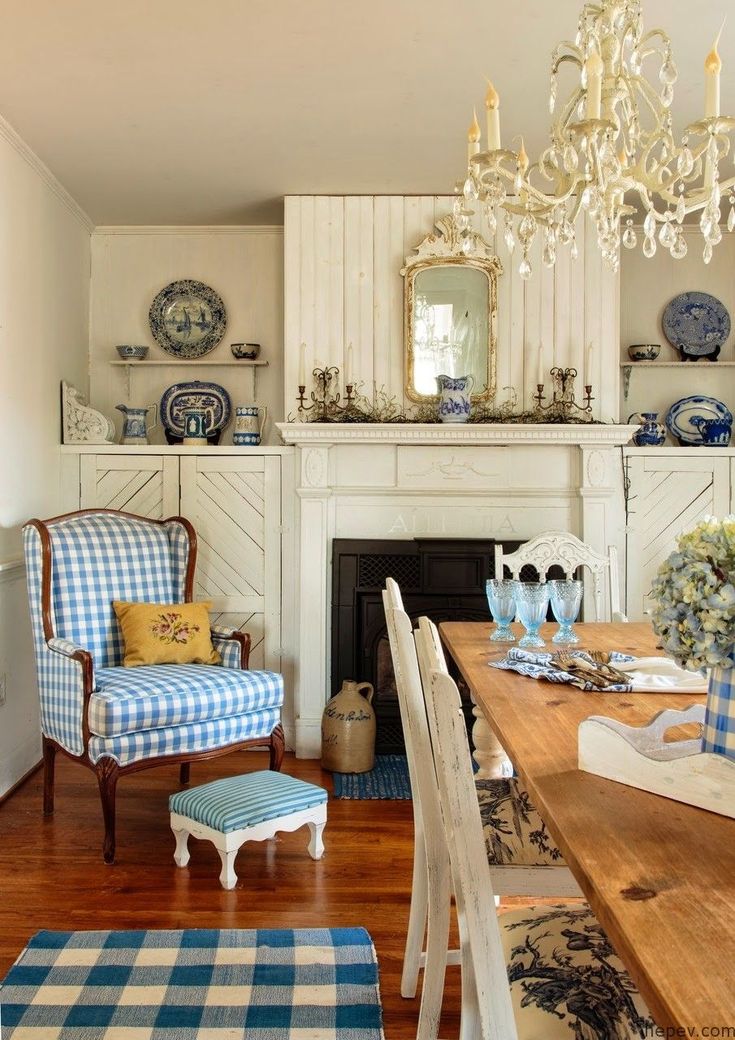 Imagine for a moment the notorious Plyushkin “with a plus sign”. Such a conservative collector, who does not part with anything and has a weakness for all the material details of his past. These character traits of a literary hero could do a good job if he became a Provencal interior designer for at least a minute. What unique rarities one could choose from his belongings:
Imagine for a moment the notorious Plyushkin “with a plus sign”. Such a conservative collector, who does not part with anything and has a weakness for all the material details of his past. These character traits of a literary hero could do a good job if he became a Provencal interior designer for at least a minute. What unique rarities one could choose from his belongings:
- candlesticks;
- photo frames;
- paintings;
- flower pots and handmade lampshades;
- vintage toys;
- grandma's jewelry;
- original jars, bottles and other utensils;
- wall plates;
- figurines;
- vases, porcelain and ceramics.
Life in the metropolis is fast and vibrant. And in such a frantic rhythm, I want the house to become a corner of calm and serenity. The Provence style in the interior of your apartment will help to give it a rustic charm, comfort and romance of the southern coast of France.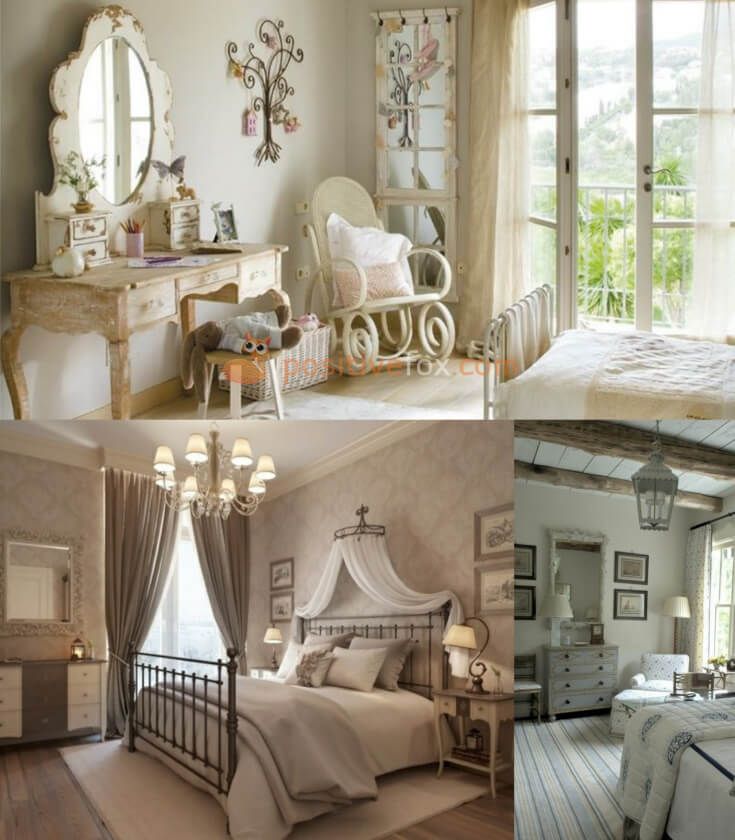 Such a design can be created using vintage items and expensive natural materials, or you can easily do it yourself if you know some secrets.
Such a design can be created using vintage items and expensive natural materials, or you can easily do it yourself if you know some secrets.
Main article
Provence style in the interior with a photo: the main features of Provence in the interior
Provence style comes from small towns in the south of France. The houses here were characterized by simplicity, naturalness and the spirit of the coast.
In modern Provencal design, the traditions of the past have been preserved, and some elements have also been added.
Spring colors
The main palette of the Provence style in the interior consists of pastel shades. Colors such as pale green, soft yellow, white and blue give the design of rooms lightness and romanticism.
Floral print on wallpaper and fabrics will bring freshness to the rustic meadow.
The pale lilac color, traditional for Provence, will slightly cool the general background and give a somewhat melancholy mood to the interior.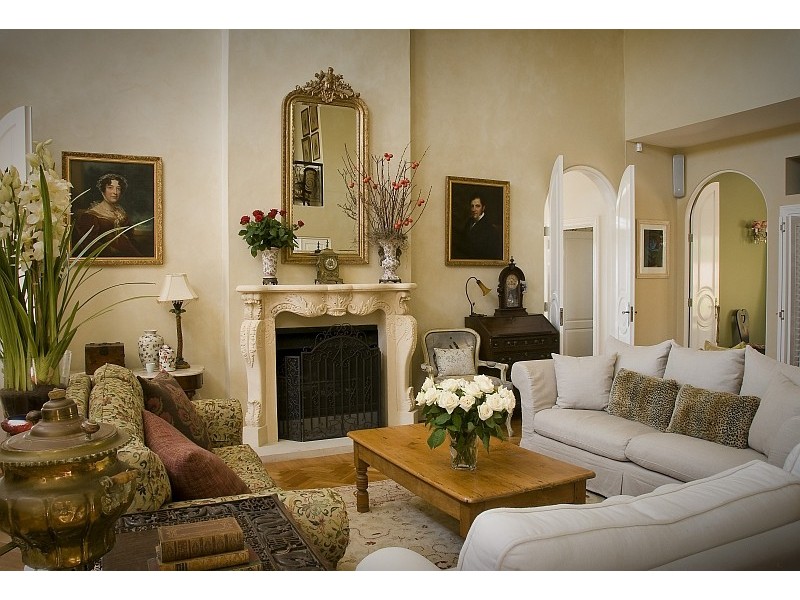
Antique effect
Vintage furniture, worn walls, shabby corners - the highlight of the Provence style.
Peeling paint and dark wood will add mystery to the interior and infuse the spirit of the times and romance of the past into your home.
Natural materials
Similar to a country house, ordinary plaster is used for the walls and ceiling. Depending on the overall palette of the interior, it can be naturally white or painted in a different pastel color.
Wooden beams or stones can serve as decorative elements.
For the flooring, it is best to use a dark painted floorboard or natural wood effect laminate.
Metal patterns
Provence style is characterized by forged elements. These can be: headboards, railings, lamps or table legs. The main thing is that forging should be openwork and light.
Such somewhat rough details, combined with pastels and floral prints, will add sophistication to the interior.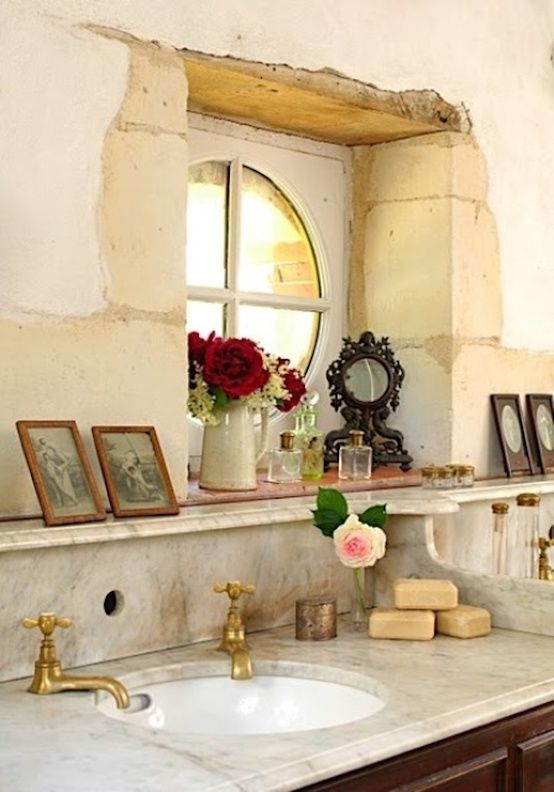
Flowers
Cut bouquets in vases and fresh flowers in pots are an indispensable part of Provence decor.
Vases can be porcelain, earthenware or glass. Such a composition will create bright accents in the apartment and give a spring mood to the general background of the interior.
A thousand little things
One of the highlights of a Provence interior is the many small decorative trinkets.
They can be porcelain figurines, frames on the walls, pillows and blankets on the bed, antique toys, clocks and lamps.
Competently selected little things will complement the overall picture and become the icing on the Provence style cake in the interior of your home.
Decorated wooden beams on the walls and ceiling create a rustic kitchen feel.
The walls along the working area can be lined with artificial stone or tiles to match the overall palette of the kitchen.
Flooring options:
- natural stone tiles;
- floorboard;
- natural wood look laminate.
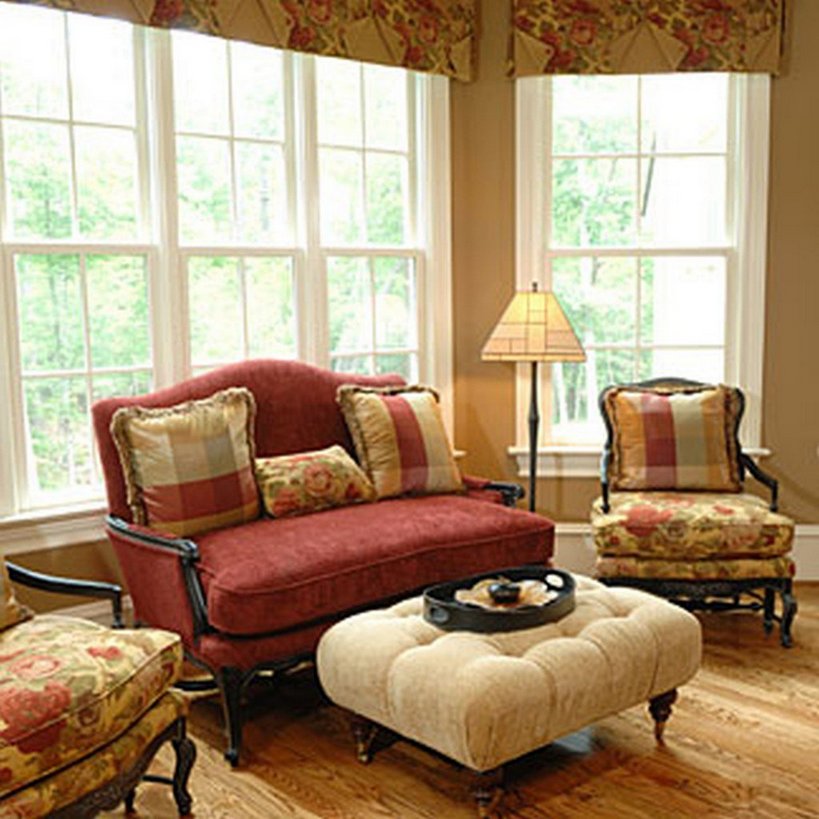
Do not forget about the effect of antiquity. You can pick up vintage kitchen furniture or buy new, with the effect of artificial aging.
Wrought iron lamp and plates on the walls will complement the image of the Provence style kitchen.
A very original way of creating a kitchen interior with tiled tiles.
Bedroom interior in Provence style
The bed with wrought iron headboards will take the central place in the interior of the bedroom.
An abundance of decorative pillows will add softness and romanticism to the atmosphere of the bedroom, and a matching bedspread with curtains will create a bright mood of a flowery meadow.
A beautiful antique chest of drawers with a mirror will fit perfectly into the overall design of the bedroom.
One of the options for decorating the floor can be a rug made of rough material.
A shaped forged chandelier or an old floor lamp will be a good addition.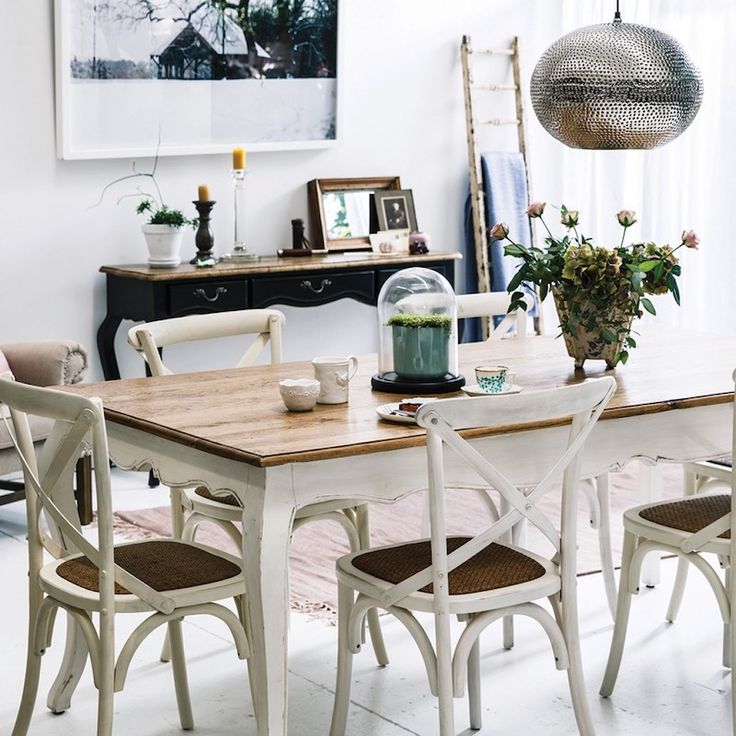
Provence style bathroom interior
For a Provencal bathroom, cool pastel colors are well suited: blue, lilac.
A deep, vintage clawfoot bathtub is complemented by a vintage-style faucet and shower.
If your bathroom has windows, they can be beautifully decorated with light curtains made of natural fabrics.
A small solemnity inherent in the Provence style in the interior will be given by a forged lamp and a chest of drawers with the effect of artificial aging.
Provence style nursery interior
Provence style nursery for girls
A pink color palette combined with a floral print will create an atmosphere of freshness and a touch of innocence.
Soft toys and antique dolls will become not only decorative elements of the Provence style in the interior of a children's room, but will also please the little hostess.
The canopy will turn the bed into a wonderful tent for the princess.
Provence style children's room for a boy
Provence style is characterized by a maritime theme.
The spirit of the coast will help to inhale the blue-blue color scheme, sea attributes and decorative elements in the form of shells into the interior.
Souvenir boats, a clock in the form of a steering wheel and a rope ladder under the ceiling will please the little adventurer.
Furniture in Provence style for home and apartment: artificial aging
Provence style in the interior suggests the presence of antique furniture.
This concept can be achieved in several ways.
- First, can be purchased at an auction or in an antique shop for antique furniture.
- Second , in modern stores there is a sufficient assortment of antique furniture.
- And, third , you should look into the attic in the country or ask around with friends. Most likely, someone will find unnecessary old cabinets and bedside tables from the middle of the last century.
 It is worth making some effort, and such furniture will look just as good as antique furniture.
It is worth making some effort, and such furniture will look just as good as antique furniture.
How to make furniture look antique
You will need:
- sandpaper;
- chalk paints to create the effect of aged furniture;
- dark wax;
- foam sponge;
- paint roller.
- First, remove a layer of old paint from the furniture. We do this with sandpaper.
- Next, cover the surface with the first coat of paint. Let it dry for 1-5 hours (see instructions).
- Apply one or two more layers, depending on the saturation of the desired shade.
- After the paint has dried, apply a layer of dark wax with a sponge. This will give an additional effect of dark wood. Wax dries within 15-20 minutes.
- The finishing touch will be vintage hinges and handles, which can be bought inexpensively in antique shops.
Antique wood staining workshop
Provence style in the interior of a private house
A private house can be decorated in Provence style not only inside but also outside.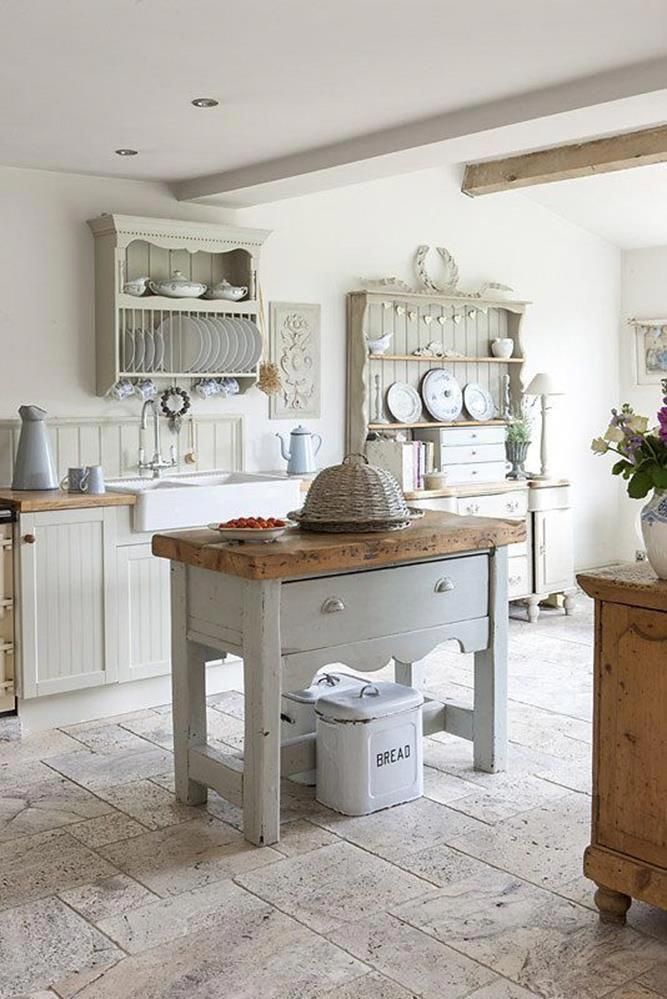
Openwork wrought iron railing will decorate the balcony and cornice.
A tiled roof finish will give your home the feel of an old mansion. Decorative elements in the form of spiers and chimneys complete the look.
Do not forget about the old decorative elements and natural flowers inherent in the Provence style in the interior.
Making your own Provence style
Creating Provence style with your own hands: what you need to consider when creating Provence in your apartment
When creating the Provence style at home, remember the following:
Creating Provence style with your own hands: how to save money when decorating an apartment and a private house
- First, remember that old does not mean expensive. Many things are quite available for sale at online auctions and in small antique shops.
- Expensive materials can be replaced with more affordable counterparts.
 For example, instead of a decorative stone - a tile under a natural stone. We replace expensive wood species with simpler ones, having previously treated them with stain and dark varnish.
For example, instead of a decorative stone - a tile under a natural stone. We replace expensive wood species with simpler ones, having previously treated them with stain and dark varnish. - Dark laminate can be laid on the floor. It will look no worse than a natural wood floorboard.
- Instead of buying vintage decorative items, you can use a little effort and imagination and make them yourself.
Photos of the Provence style in the interior: examples of the design of apartments and private houses
›Provence Style style)
I present to your attention our attempt to understand what is provence style or Provencal style. For the analysis, information was used not from encyclopedias and hackneyed sites, but from forums from Russian-speaking people living in France. Before collecting information, our knowledge of the Provence style ended with light-colored wooden furniture and lavender, lavender, lavender again.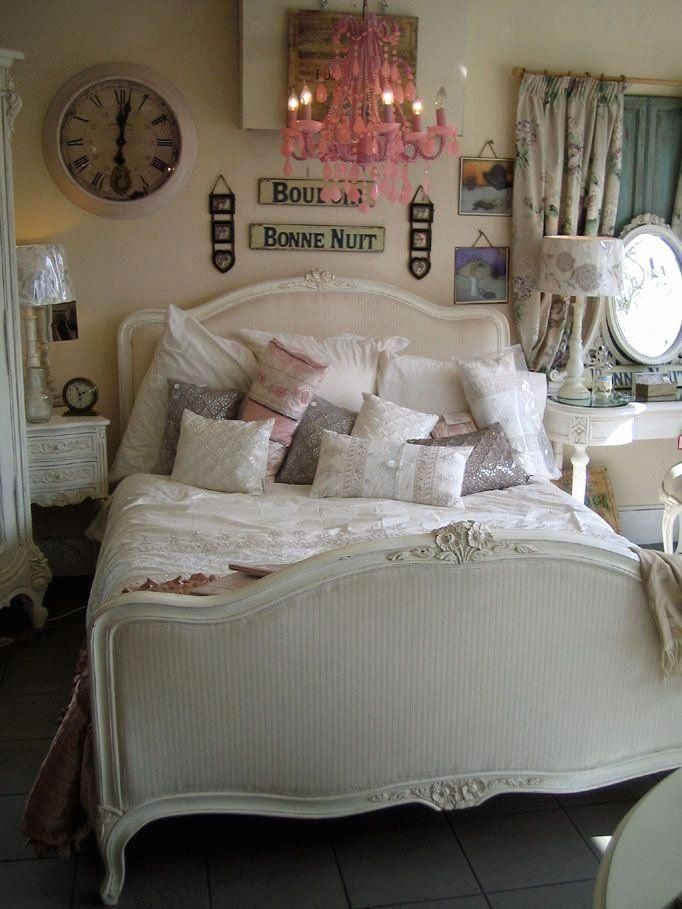
Well, let's start collecting our painting called Provence Design from puzzles. The puzzles will be decorative elements, wall painting, floor tiles, curtains, furniture. We will especially dwell on the theme of Provence-style cuisine.
Provence style colors
Colors that are typical for Provence style interiors is, first of all, fresh and bright colors that create a cheerful mood. There are only two main colors - this is the color of saffron, that is, the orange-yellow and blue color of lavender, which, according to stories, grows in abundance in Provence.
Important Provence style ( provence style ) a combination of neutral colors like grey, white, beige, mustard, rust color with bright Provencal colors like yellow, orange, olive, lavender, cobalt blue, red.
Provence furniture
Provence style home furniture mainly wooden tinted, possibly with patina, garden furniture - iron, forged. The latest trend in Provence style is that garden furniture is moving inside the house.
A typical piece of furniture is a sofa, as if consisting of two or three chairs with wicker armrests and seats.
The color of Provence furniture can be pastel with additional color finishing, the furniture itself is modest, but painted in the form of flowers and fruits. Sprigs of lavender, spikelets, sunflowers, branches of an olive tree are often drawn on the facades of furniture.
To give furniture a Provence style , it is necessary to nail the slats onto smooth facades without relief, paint the furniture with light paint, and all the protruding parts of the doors with paint darker than the main background.
To store linen in the houses of the French countryside, large wardrobes with glazed doors are used, on the inside of which a curtain can be pulled. A strip of lace is attached to the edge of the shelf, and, of course, bags of lavender are placed, which repels moths with its smell.
Provence fabrics
Provence fabrics with characteristic patterns of olive tree branches, bouquets and bunches of lavender, lavender baskets, and don't forget about poppies.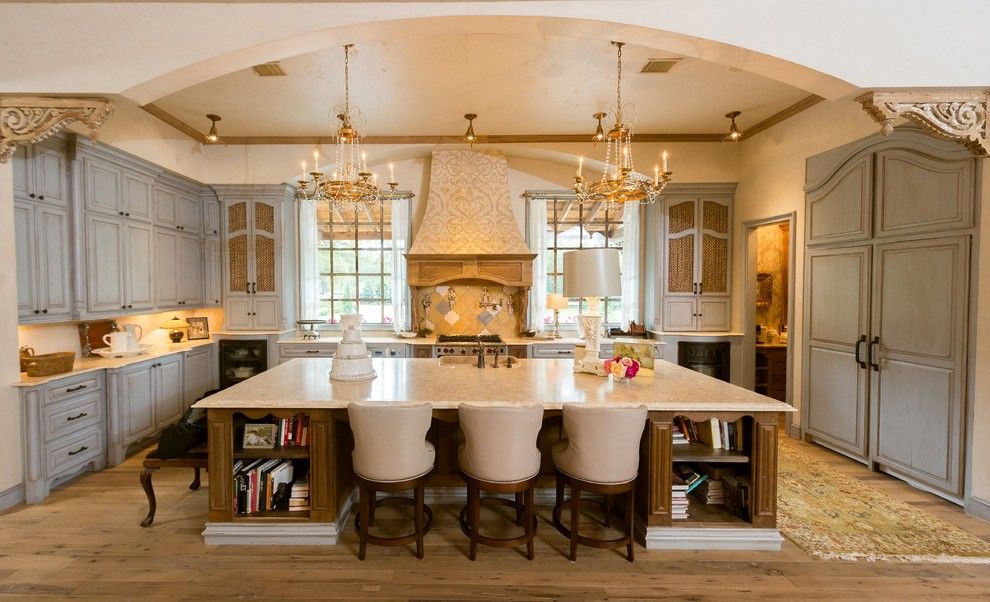 On the beds and sofas, even on the tables covered with buti.
On the beds and sofas, even on the tables covered with buti.
Provencal fabrics are durable, do not fade, almost do not wrinkle, rich colors. Use these fabrics for sewing napkins, pillows, curtains. Two layers of cotton, batting between them, are stitched with a peculiar pattern by hand or on a typewriter - this sewing technique is called Pique de Marseille or Marseille stitch.
How can you tell if a fabric is in the Provence style: it has symbols of Provence in the form of spikelets, olives, lavender, sunflowers, fabrics with both geometric and floral patterns, colors both pastel and bright.
Throw-out bedspreads
Throw-out in the interior is indispensable. Provencal booties are quilted bedspreads.
Buti embroidery consisted of quilting individual elements of the ornament, stuffing them with special threads. As a result, the ornament acquired relief. Tablecloths, bedspreads, napkins made using the buti technique are durable, do not require ironing, are not easily soiled, and keep their shape well.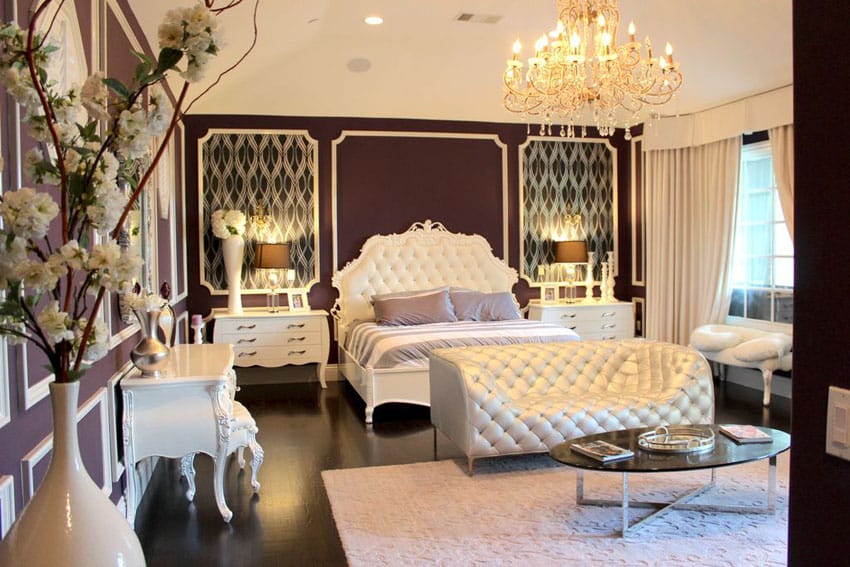
Interior walls in Provence style
Walls in the interior of a house in a Provence village always white, i.e. bleached or colored, in provence a lot of colored clay. Walls can be lavender, yellow, terracotta and no wallpaper or wooden walls. The painting of the walls is uneven, stained, as if painted by an inexperienced person.
Curtains in Provence style interior
Fabrics for curtains in Provence style are natural – linen, cotton and organdy (very thin cotton). Curtains in the kitchen, above all simple. For example, it can be lace curtains up to the middle of the Bistro style window. Such curtains are also called short curtains, because they are hung on a cornice or string, which can be at any window height, more often in the middle. Often the upper part of the window is left open, but sometimes it is decorated with a lambrequin (upper part), which is made of the same fabric.
Provence style ceiling
Wooden beams on the ceiling, which are either painted, or whitewashed, or even left in their natural color.
Provence style floor
The floor is usually tiled with burnt red clay. The tile is square or rectangular, less often hexagonal. Tiles are small.
Wicker baskets in the kitchen for vegetables and fruits, for storing linen in cabinets. The earthenware is brown and unglazed.
An important detail - lamps on high legs. Such lamps are installed in the living room, and in the hallway, and in the corridor on the console, dressers.
Provence style in the interior - the charm of light, good antiquity and simple luxury. In this style, the centuries-old traditions of French country houses and the eternal beauty of Provencal nature are intertwined. Inspiration, tranquility and comfort, light and lightness await you in a house that is literally permeated with the languid slowness of the gentle sun, the freshness of the Cote d'Azur, the aroma of Provencal herbs and endless lavender fields.
You can create a stunning harmony of French rustic simplicity in your own home, no matter where in the world it is. Only, starting to implement this idea, you should remember a few characteristic features of the style.
Only, starting to implement this idea, you should remember a few characteristic features of the style.
Provence style in the interior is:
- palette - light pastels
- light, mostly white "aged" furniture
- light colored floors
- weightless, lightweight curtains or lack thereof
- use of floral patterns
- abundance of natural flowers
- natural textiles, ruffles, lace, sewing and embroidery
- forged elements
- interior details made of porcelain, ceramics, fabrics
Floors, walls, doors, frames
The walls of a Provencal house are completely uncharacteristic of wallpaper. Real Provencal walls are covered with white plaster, as a rule, with deliberate negligence - you can see slight roughness and irregularities on them. For wall decor often glazed brick or natural stone is used. The walls are usually painted white, light blue , light yellow, milky, sometimes pastel gray and pastel beige , quite rarely - in light pink.
Provence furniture
Another “calling card” of the style is a wrought iron bed . Moreover, forging must be airy, openwork (this also applies to stairs, lamps, and other interior details). No heaviness and solidity, only French lightness and elegance.
Curtains and textiles
When decorating windows, it is important to keep simplicity and the same lightness. Initially, Provencal houses had small windows, and since they most often went out into the garden, the curtains they were either not used at all, or were very light to allow air to pass through on a hot day, and light to saturate the space with the sun. Following these traditions, it is better to choose light white tulle for curtains. or cambric, satin, chintz with a small floral pattern. Curtains with a pattern look perfect, echoing the pattern on other textiles in the room.
Since we are talking about a rustic style, all fabrics used in the interior should be natural: it can be printed cotton, linen, wool, muslin.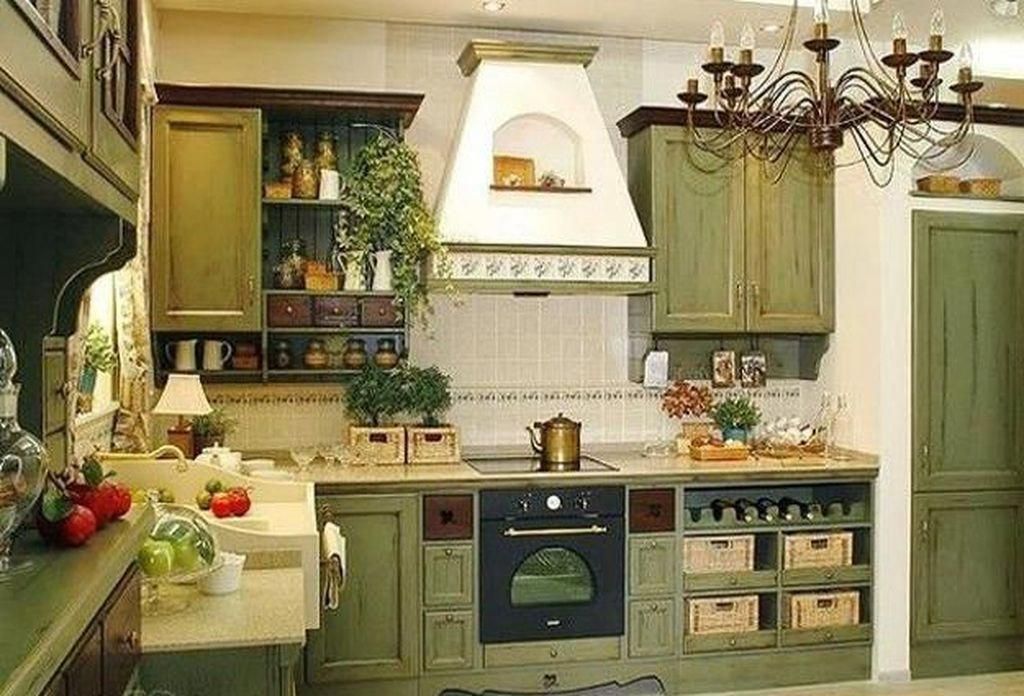 Textile colors should be soft, muted. Traditional colors: white, milky, light yellow, ocher, lavender, terracotta , light blue.
Textile colors should be soft, muted. Traditional colors: white, milky, light yellow, ocher, lavender, terracotta , light blue.
The most commonly used fabrics are floral, but sometimes it can be a stripe. By the way, the marine theme is also characteristic of the Provence style, therefore, choosing a sea line, it would be appropriate to add various relevant details to the interior: shells, shells, fishing nets.
Bed linen should be richly decorated with embroidery, ruffles and lace. A quilted bedspread, lots of pillows and weightless canopies - all this creates an atmosphere of a cozy rustic bedroom that invites you to plop down on the bed on a hot afternoon or a languid evening and dissolve in bliss.
Parts
As for cute knick-knacks, here the lovers of them really have a place to roam. We can say that cute little things make this interior. Vases, fruit bowls, figurines, planters, photo frames, birdcages, candlesticks and lamps - the more these cute things, the more Provencal the interior looks.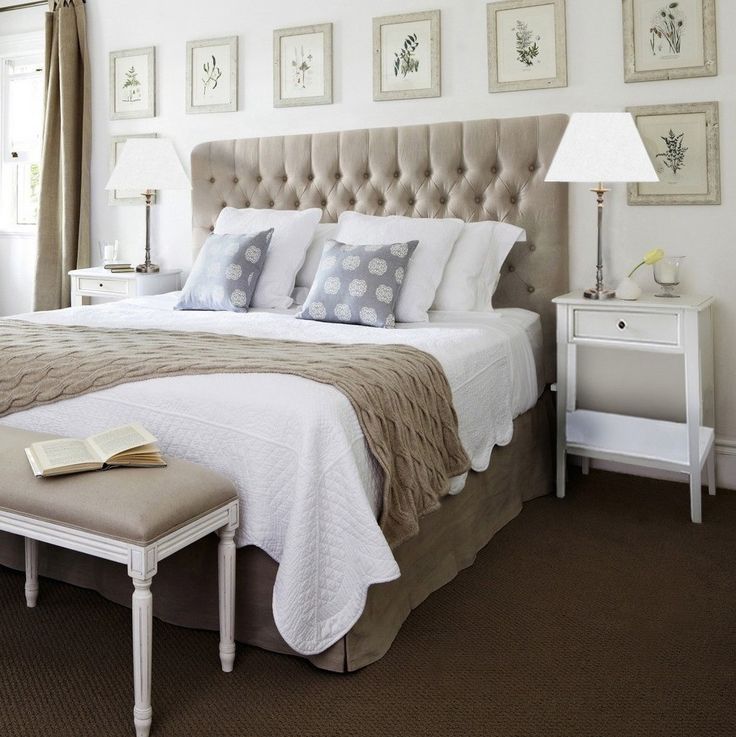
There is an opinion that the Provencal style is created over the years and generations, its details and features accumulate over time
It has absorbed all the charm of the coastal towns of the Côte d'Azur , light as a sea breeze contours, simplicity and naturalness of materials, as well as traditions of good taste that have been passed down from generation to generation. In this region, people are very friendly and hospitable, and local dishes will not leave indifferent any gourmet.
Provence style looks great in the interior of the kitchen and gives great freedom of creativity to the hostess in decorating it. Moreover, the unique charm of Provence makes it possible to turn even a small city kitchen into a cozy corner, where everything is "saturated" with southern motifs and style.
Sometimes this style is also called French country, which is not a mistake, because rustic motifs give the interior a special charm that allows you to create a unique atmosphere of coziness, comfort and hospitality.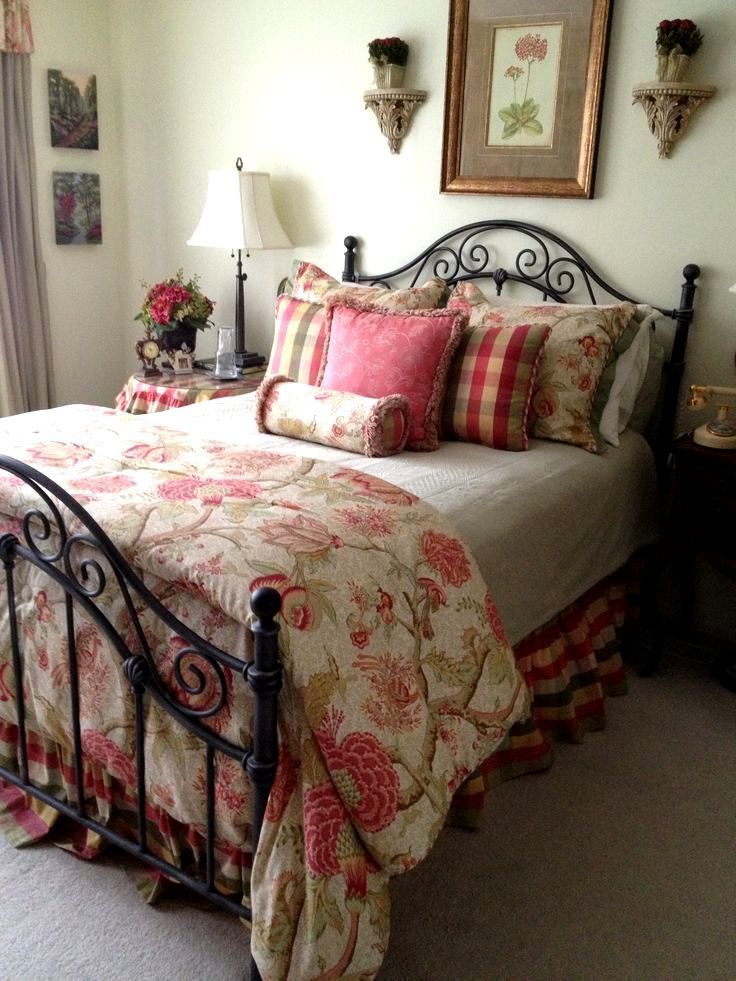
Main features:
- Light colors , pastel colors in the design of walls and furniture;
- Such a kitchen should have a lot of light - either from a large window, or from abundant artificial lighting;
- Antique or aged furniture with patina , scuffs, wood carvings;
- Abundant use of forged elements , accessories made of copper and bronze;
- Many and plants in clay or porcelain pots;
- Open shelves with plates , wicker elements, natural textiles.
Well, let's take a closer look at all the key elements of this style.
Color combination rules
There is a stereotype that a Provence-style kitchen should be exclusively white, but this is absolutely not the case. The palette of colors used is very wide. Blue, beige, olive, gray, cream and sand - each of the quiet colors is perfect for this style. About each of them separately, we will talk further.
Preferably, as mentioned above, these should be pastel colors , but in modern conditions this is no longer an axiom.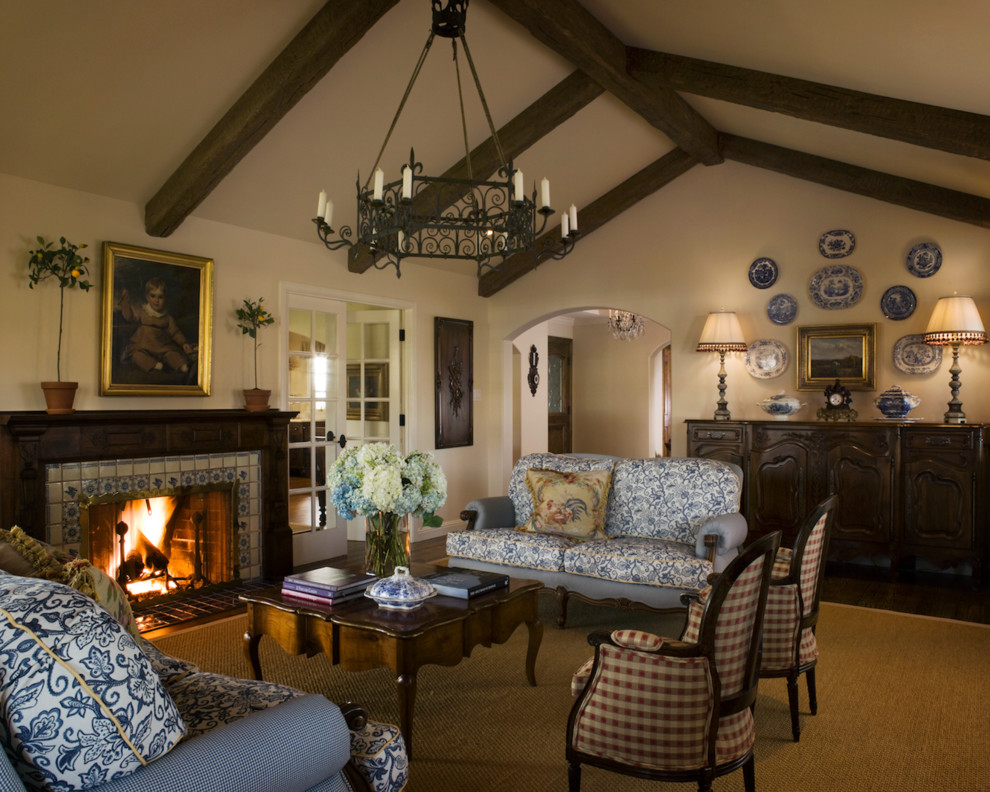 This is related to that under the abundant southern sun most of the colors fade, so the palette of such colors gives an excellent effect of the "southern" interior.
This is related to that under the abundant southern sun most of the colors fade, so the palette of such colors gives an excellent effect of the "southern" interior.
This photo shows a Provence-style kitchen in light colors. The white set makes the room visually more spacious and lighter, but it is more demanding in care.
In our opinion, this interior lacks saturation, bright color notes. Although, the color of the flooring contrasts well with the furniture and walls.
Olive and mahogany
One of our editors' favorite combinations, perfect for a Provence style kitchen. This muted shade of green is reminiscent of olive groves and hot summers on the south coast of France, while making the room feel cozy and homey.
Dark olive looks best in spacious rooms in combination with dark-colored natural wood furniture. The larger the room, the darker the tone can be chosen, and vice versa. Light olive walls go well with cream, sand, blue and gray.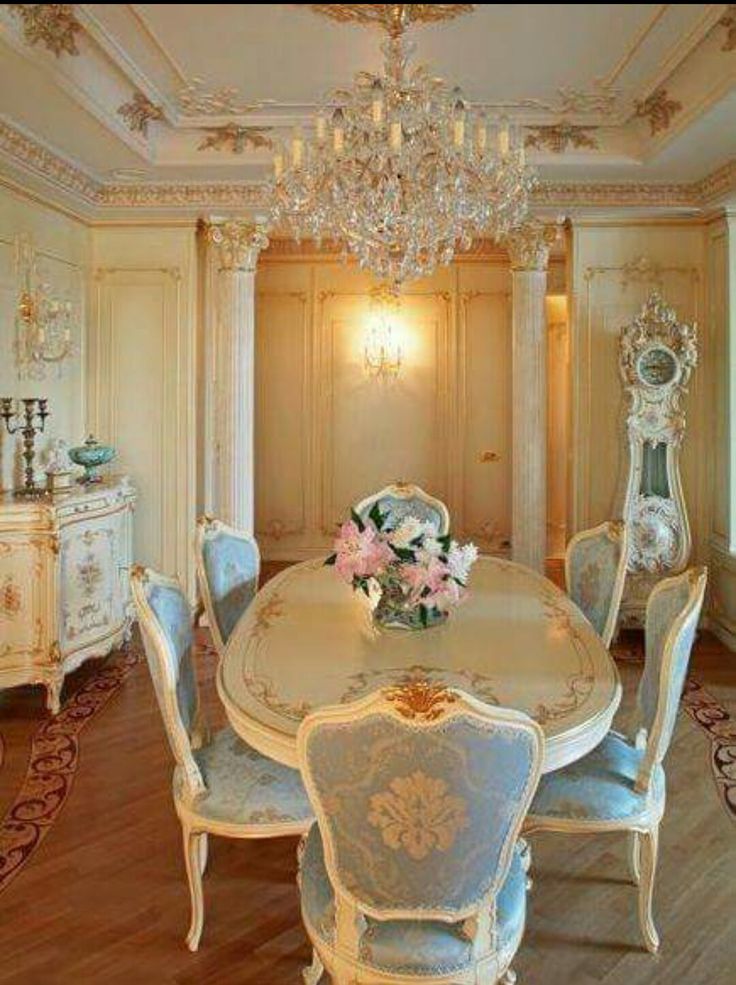
Pistachio and light wood
pastel and delicate pistachio shade looks great in the kitchen in the French country style. It matches well with white, blue, pink and light wood color.
Notable feature of this color is its ability to "refresh" the interior of the kitchen with its light green background. Agree, the whole room looks somehow airy and not overloaded, it gives the impression of an "eternal" summer. Also, it goes equally well with both light and dark floors and furniture. Here are some great examples:
More pistachio interiors can be found in this one.
Sandy and brown
Light yellow and sandy shades of burnt grass remind of the hot southern sun. This is a truly summer color, which is ideal for fans of interiors in light colors. And how many tones and halftones of this color happen, you can’t even imagine (about 20).
Yes, the color of the sand, first of all, harmonizes perfectly with brown. For example, make the facades light, and the countertop and floor dark. Also, against the background of light yellow facades, brown fittings or frames of glass inserts will look good.
The photo shows a Provence-style sand kitchen from Leroy Merlin. We think it's a great job! Next, we will show even more interesting and real interiors.
It should be noted that this color is very common among domestic furniture manufacturers , because it is one of the most versatile color solutions and not only for the Provence style.
Blue and white
The blue color is typical of the Provence style and is very common, both on furniture facades and in wall and window decoration. Often this shade can be seen on French kitchen utensils: plates, jugs or vases.
This is due to the fact that naturally different shades of blue come from the sea , almost constantly cloudless sky, as well as a variety of Provencal herbs and flowers.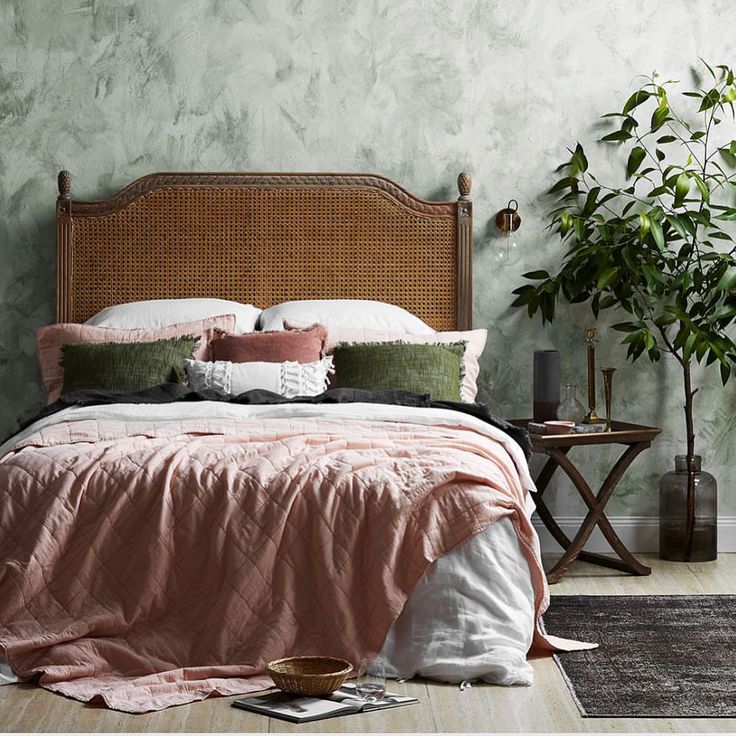 Light blue tones seem to "cool" southern interior and saturate it with notes of coolness and beauty of the sea.
Light blue tones seem to "cool" southern interior and saturate it with notes of coolness and beauty of the sea.
French Provence is not only white, take a look at the pastel blue tone.
Variations of Blue
Intense and deep blue is also common in South Coast homes. It matches well with shades of green, blue and brown. Contrasting blue looks very good in a composition with white.
As in the case of light blue, blue allows you to "cool" the interior a little and make it harmoniously saturated without compromising the authenticity of the country style.
A deep blue kitchen will be in harmony with light gray and blue tones.
Walls :
- No wallpaper . Yes, there are country interiors with wallpaper in the kitchen, but believe me, it is extremely rare. If you carefully study all the photos presented in this article, then you can once again be convinced of this.
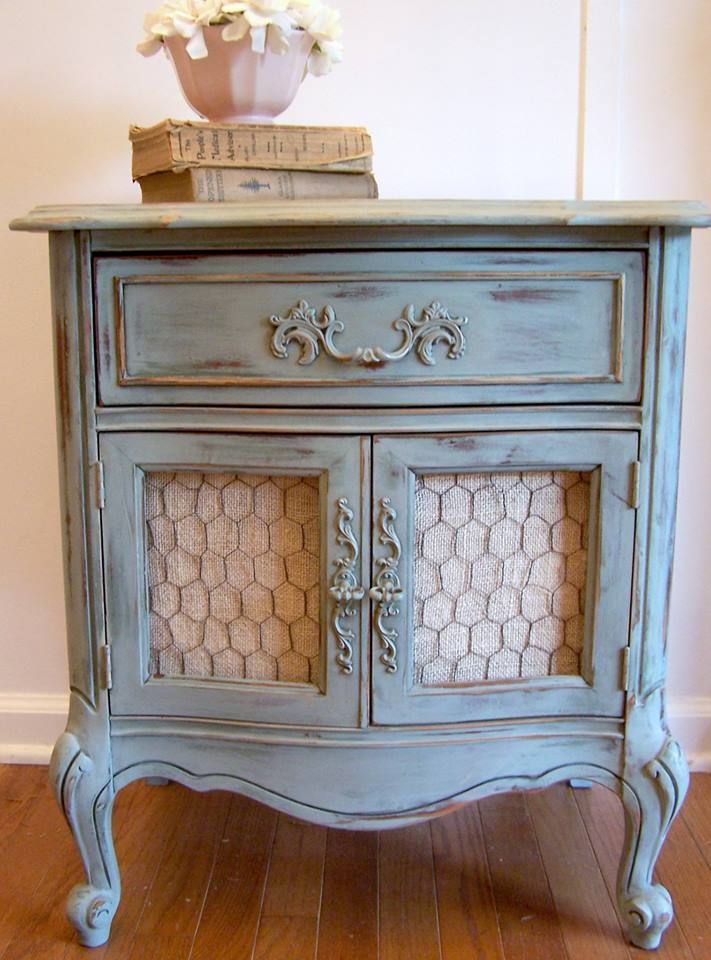 Walls painted accordingly will look much more harmonious and natural in such a kitchen;
Walls painted accordingly will look much more harmonious and natural in such a kitchen; - Textured or plain plaster followed by painting or whitewashing. There is an unspoken rule here: if this is a kitchen in a country house, you can choose a rough texture or even whitewash; and if this is a city apartment, then it is better to paint the walls as smoothly as possible;
- Pastel, faded colors . Much has already been said about the palette in the previous section. Studying various photo examples will help you choose the most suitable project;
- Sometimes stone, brick is used for cladding or old boards . In urban conditions, as a rule, they are limited to either partial (local) use of the above elements or they are not used at all.
In a country house the space of the kitchen and the lesser level of "pretentiousness" allow the painless use of stone, boards, beams, tiles, bricks, etc. The main thing is not to overdo it and not turn the kitchen into something between a hallway and a garage.
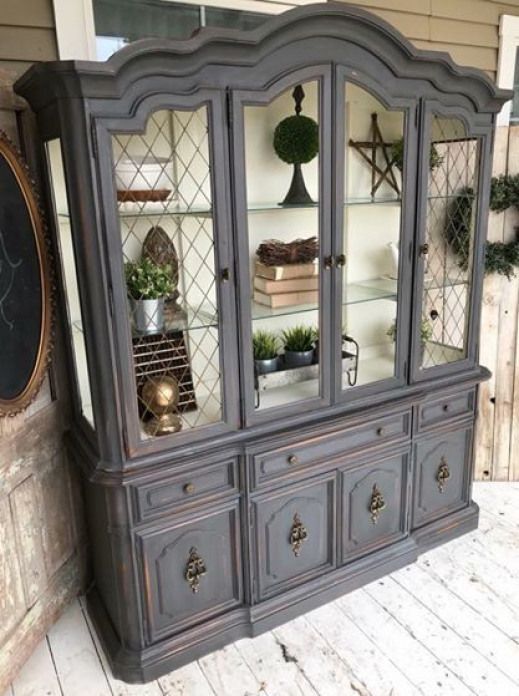
Provence style furniture all style.
We have grouped all the distinguishing features into several theses:
- Material - cotton or linen . What could be better than a good bright 100% cotton tablecloth? Such things give a pleasant feeling of comfort and homeliness;
- Pastel colors - muted blue, purple, pink, orange and other tones are best suited;
- Floral or check patterns on a tablecloth, towels, apron or on. Provence has a very diverse flora, from flowering field plants to citrus front gardens. Almost all year round there is something blooming;
- Lace, ruffles, embroidery on napkins, bedspreads and lampshades - these elements "domesticate" the interior on a small, local scale;
- Drawstring padded seats for forged chairs - useful for both comfort and decor.
French country in detail
In addition to the above elements, it is necessary to fill the room with a variety of accessories that are inherent in this style.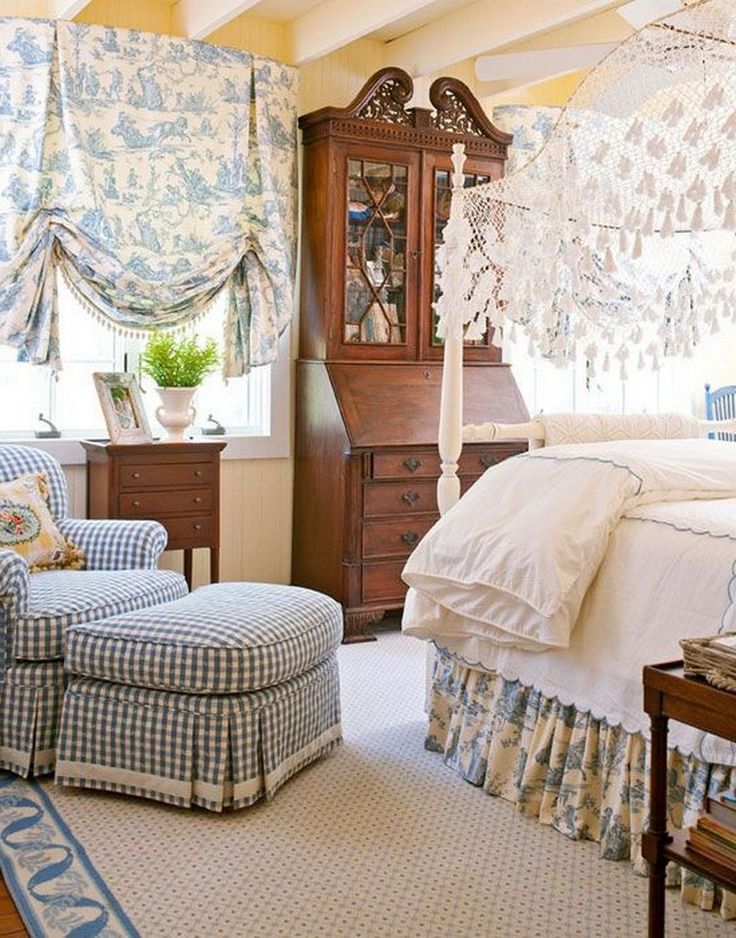
Almost all key features are listed below , the observance of which will help you complete the design.
Profusion of flowers in various kinds of pots (ideally porcelain, clay, tin), as well as bottles. Metal pots and buckets are also often used. Lavender, rosemary, sunflower, medium-sized rose will look authentic and even sunflowers.
If there is a large window sill , you can plant greens in an oblong pot, for example, basil or rosemary. It is not recommended to place ficuses, money trees, cacti, as well as plants whose leaves or flowers attract insects or smell unpleasant.
Kitchenware , which is in plain sight, should be made of copper, bronze, or be with inserts of these metals.
In addition to this you can hang bundles of onions, garlic, dried flowers or cereals, as well as beautiful bottles of olive oil. You can also place a row of jars for spices, a pepper or coffee grinder, old cookbooks.
Bright dishes on open shelves : plates, dishes, vases, teapots and other porcelain items.
Optional so that these dishes are from the same service. You can, and probably even need to be creative in the process of decorating with dishes.
In practice, the French hostess collects her collection "from the world one by one": she will buy a tureen, then she will be presented with a salad bowl, then she liked a large dish. As a result, a wonderful composition is obtained, which pleases the eye not only of the hostess of the kitchen.
Enameled jugs and cans - if they are broken or cracked, then this is not a problem at all, but even a huge plus.
They can either be empty or serve as a vase for natural or decorative flowers.
Provence style chandeliers often made of brass or rough forged metal.
Many models are decorated with porcelain inserts, glass or fabric lampshades. Remember that in such a kitchen there should be a lot of light: natural and artificial.
Feel free to place a few more lights in addition to the large chandelier.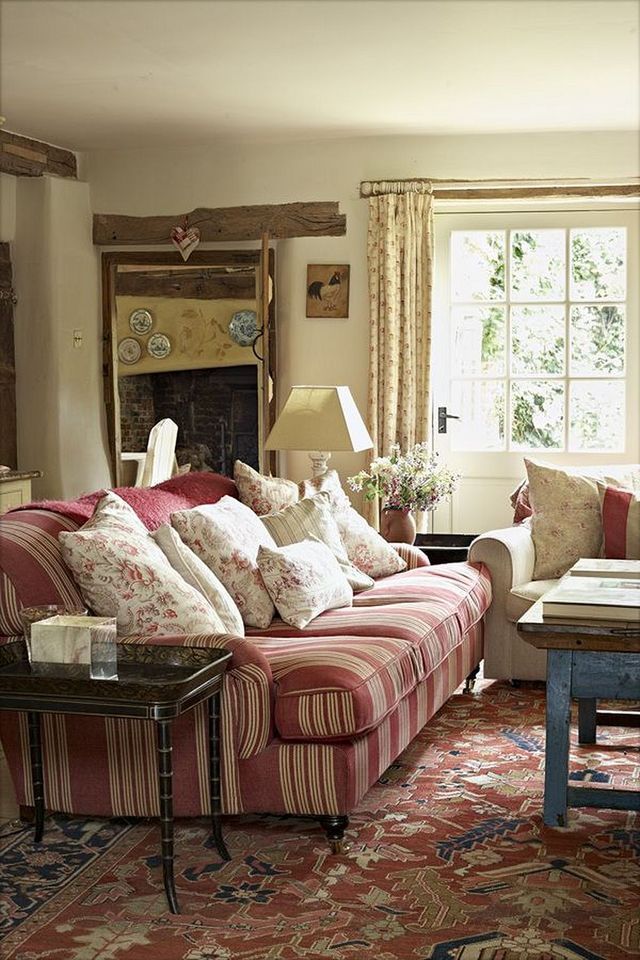 Vintage enamelled shades are often used for single-lamp hanging lamps.
Vintage enamelled shades are often used for single-lamp hanging lamps.
Mixers . If the kitchen is made in a rustic style, then antique bronze-colored rough-shaped faucets with cross valves are the best choice.
If you are looking for an urban style interior, we recommend choosing faucets made of brushed metal or painted white acrylic, modern faucet bend and lever type valve.
Fortunately, today the range of sanitary ware is impressive and you will definitely find the optimal model of a faucet, sink, and soap containers.
Worktops . Preferably from natural or. Wood countertops are also a good option. Some still lay them out in the old fashioned way with small tiles.
Working area , as a rule, is made quite spacious. A holder for kitchen utensils, shelves for spices is attached to it, and closer to the window - shelves or holders for flower pots.
You are also free to choose any other accessories that you think will make your kitchen perfect.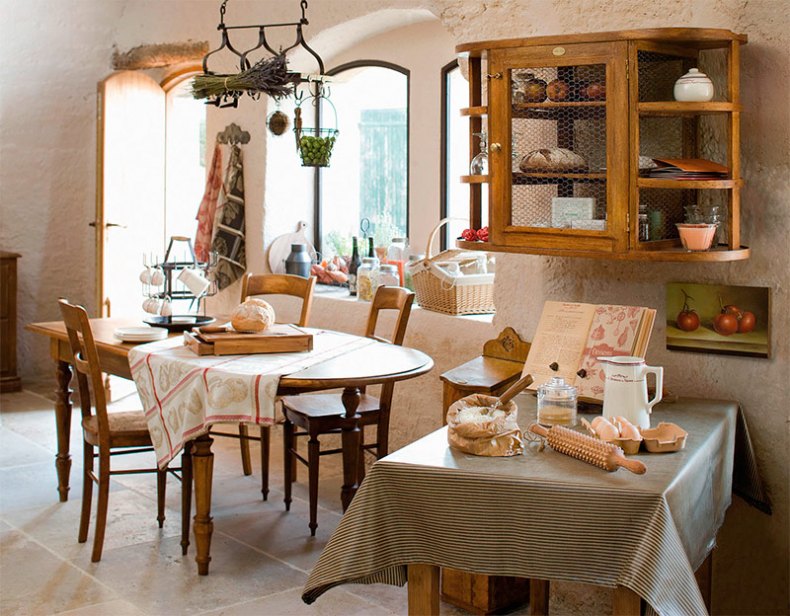 In general, it can be decorated constantly, bringing fresh ideas to traditional options.
In general, it can be decorated constantly, bringing fresh ideas to traditional options.
Making a small kitchen in Provence style
Let's be honest, this style is more suitable for large spacious rooms in a private house than for small apartments.
But if you use the key details, the motif inherent in this style, it is quite possible to recreate the atmosphere of a romantic south coast in a small-sized city kitchen.
A lot of light, the right combination of colors, competent moderate filling and placement of final accents - all this will help you achieve what you want .
In such a kitchen it is always summer - sun and warmth, flowers and good mood, delicious food. You will fall in love with her even at the stage of the project, it is simply impossible not to fall in love with her.
Provence style cottage - comfort and tranquility of the French province
Mon, 03/20/2017 - 10:24 | Comments: 1 | Author: OLCHUKS
The design of a summer cottage must be approached taking into account the fact that in the summer all family members of different ages will spend most of their time. And here, outside the city, I want to remove the shackles of snobbery, to live in a modest environment in the bosom of lovely nature. Skillfully selected decor style will allow you to relax, breathe freely.
And here, outside the city, I want to remove the shackles of snobbery, to live in a modest environment in the bosom of lovely nature. Skillfully selected decor style will allow you to relax, breathe freely.
Provence, a province in the southern regions of France, attracts not only with its friendly climate, but also with a design with an exciting smell of the village, a little rough, but not devoid of faded aristocracy. You can create a simple, cozy corner in the country without spending any special money, just give free rein to your imagination.
Contents:
- Basic rules, features of Provence style
- Planting like in French country estates
- Garden decoration
- Provencal interior in the terrace, gazebo area
Basic rules, features of the Provence style
Some rules will help to create the spirit of the province, the village:
- The landscape of the territory should be distinguished by cozy negligence, neglect.
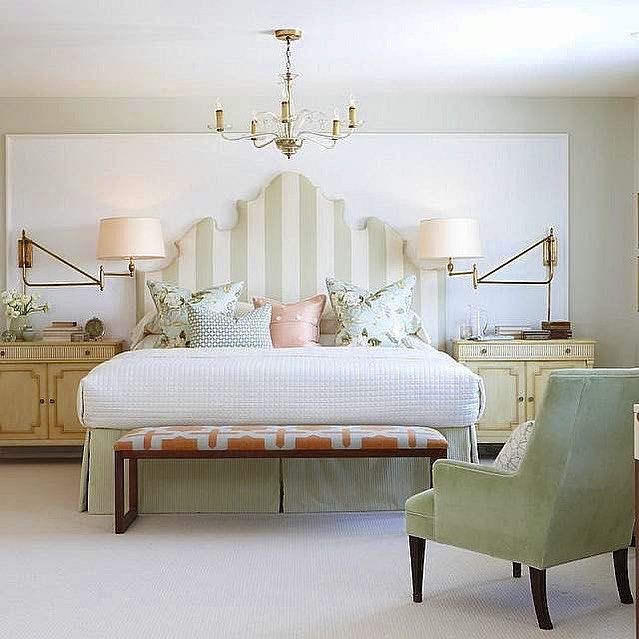 Everything grows as if by itself, but it only seems. The seating system must be respected in accordance with the style.
Everything grows as if by itself, but it only seems. The seating system must be respected in accordance with the style. - Only natural materials – wood, stone – are used for the decoration of houses and plots. If for the owner of the dacha their use will be an expensive pleasure, then you can get by with tiles, concreting, imitating naturalness.
- Rough, unhewn logs, uneven ceilings, oblique corners are preferred in buildings.
- The design uses antique or specially aged furniture, copper and ceramic jugs, clay pots, linen materials on pillows, curtains.
- Designs in the country are painted in contrasting colors. Against the background of black or dirty gray benches, tables, coasters, red, yellow, blue, green, lavender tones shine even brighter.
- A feature of the provincial garden in the French style will be antique fountains made of rough stone, many places for recreation in the form of gazebos, benches.
Planting plants like in the country estates of France
The main place in the garden should be occupied by a plot with fruit trees.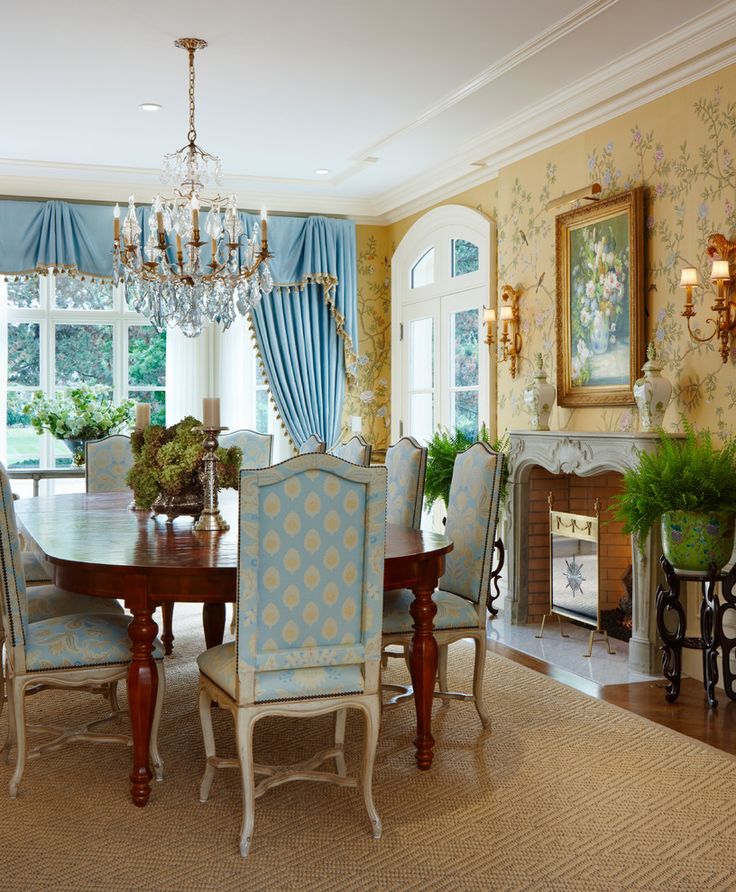 They can be planted along a fence painted white. From various fruit-bearing apple trees, pears, peaches, you can build a palmette. Regularly pruning the crown of trees, they ensure that the branches stop growing upwards. Branched tiers of side branches connected in the form of an arch are obtained, located on oppositely growing trees.
They can be planted along a fence painted white. From various fruit-bearing apple trees, pears, peaches, you can build a palmette. Regularly pruning the crown of trees, they ensure that the branches stop growing upwards. Branched tiers of side branches connected in the form of an arch are obtained, located on oppositely growing trees.
An obligatory requirement for a Provence-style garden is a mixture of different shades and aromas of sunny summer.
Plantings of olive, myrtle, viburnum are preferred among shrubs. These plants are not afraid of drought, give a pleasant aroma to the garden. In flower beds that do not have borders, but smoothly flowing into one another, annuals and perennials of different colors are planted: beige, pink, purple, white. Flowers with light shades are placed in the middle, and bright inflorescences are placed along the edge. Preference is given to geraniums, lavender. Flowers are planted in clay pots, flowerpots, wicker baskets standing all over the site.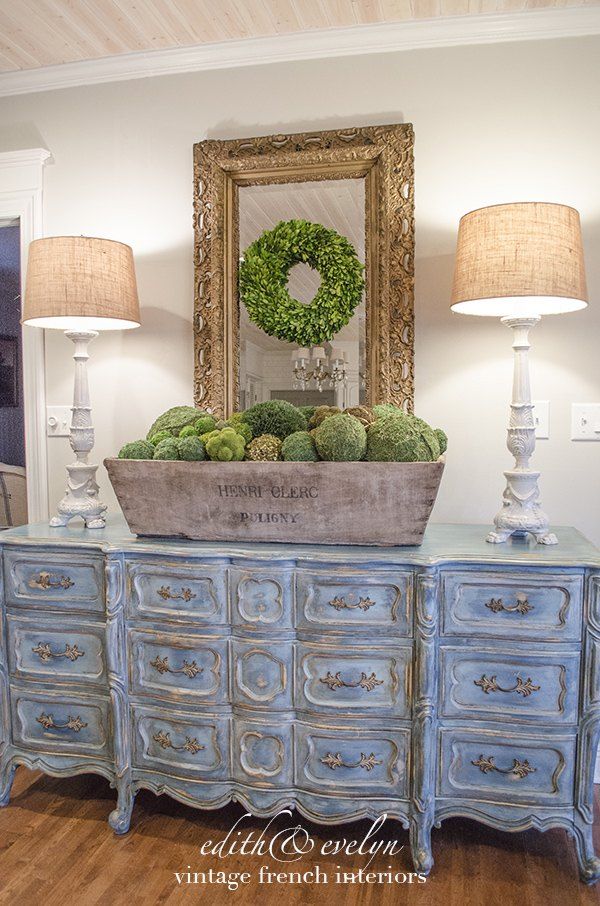
Climbing plants are given a place near the terrace, gazebos. Scourges of grapes, wisteria, roses can wrap around trellises, pergolas. Under the windows of the summer kitchen, you can place a small vegetable garden, surrounded by a low wattle fence, planting greens and herbs on it. It is good to inhale the smells of rosemary, sage, parsley, dill in the evenings!
Decorating the garden
The decoration of the garden area should be in accordance with the chosen style:
- Snow-white benches will create a light romantic mood, next to which there will be clay pots or low round barrels made of wood with fragrant flowers of a delicate tone.
- Terracotta paths to the house can be decorated on the sides with arch-like frames - pergolas. Ivy-covered trellises along a rocky wall will look good. They will keep cool, shade on hot summer days.
- Small fountains made of cobblestones will also become a decoration of the garden.
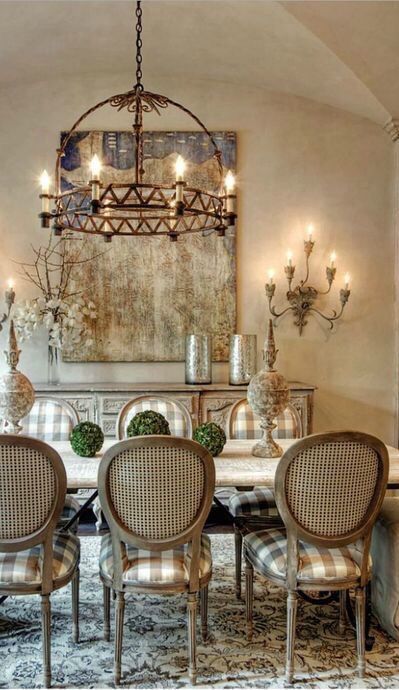 They will help increase the humidity of the air during the hot summer. You can replace them with artificial reservoirs, the banks of which are decorated with shards of ceramic dishes, painted to match the garden.
They will help increase the humidity of the air during the hot summer. You can replace them with artificial reservoirs, the banks of which are decorated with shards of ceramic dishes, painted to match the garden. - Garden furniture, preferably wicker, will fit well into the interior of the summer cottage. An old sofa or armchair with soft pillows is suitable for relaxing.
- Narrow, winding paths made of large pebbles or gravel will take you mentally to distant Provence.
Every detail of a rustic garden must be thought out.
Provencal interior in the terrace, pergola of the plot
Terraces, laid out of stone, located on a hill - another important part of the garden. Climbing the hill is better on stone steps, a little cracked, and so that the walls of the hill do not crumble, they are supported with rough masonry. Plants, such as grapes and vegetables, also play an important role in strengthening earthen walls.